What are the must-sees in Warsaw? Poland’s capital is modern, dynamic and exciting, with a rich history! So there is no shortage of activities in this multifaceted city.
From the old town to the business districts and the amazing Praga district, discover in this travel guide the visits not to be missed in Warsaw, the good plans to discover this city and a selection of good addresses.
This travel guide is produced in commercial collaboration with the Tourist Office of Poland in France. However, I reserve the right to make my own comments. The opinions and suggestions for activities mentioned in this article are therefore entirely sincere.
Summary
Warsaw in short
- How to get there? The fastest way to reach Warsaw is of course by plane, several companies such LOT (Polish company) offer regular rotations between Warsaw and major world cities. It is also possible to go there by train. For example, Paris-Warsaw takes 14h30.
- When to go there? The weather in Poland is ranging from -2° in January to 20° in July. Paradoxically, if the sunshine is the best from May to August, it is also at this time of the year that it rains the most. Each season has its advantages (and disadvantages!).
- How to get around ? There is a very good public transport network in Warsaw (buses, streetcars and a modern and clean metro). It is possible to buy a ticket for the whole network (including the airport) for only 36 PLN or about $7. Cabs are also very cheap, a 15 minute ride costs about $5.
- How to communicate? English is a language spoken by most of the employees of tourist places (museums, restaurants, hotels…).
- How to pay? Although Poland is part of Europe, it is not a member of the Euro zone. The currency used is the Zloty (PLN) with $1 = 4.8 PLN. Before leaving, remember to check the bank charges for payments in foreign currencies with your bank to avoid unpleasant surprises.
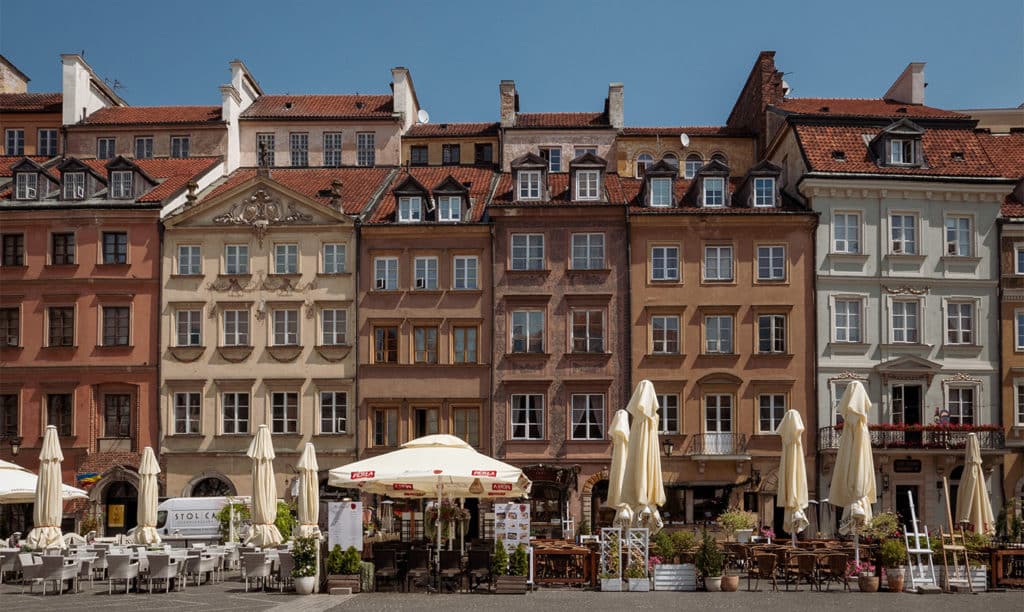
A historical reminder to understand Warsaw
Warsaw has been very much marked by the history of the 20th century, so it is important to know a few significant episodes to understand the architecture of the city.
A city almost entirely destroyed during the Second World War
A martyred city during the Second World War, Warsaw was 85% destroyed by Nazi Germany, which wanted to make an example of it and completely devastated it. At the end of the war, the city was a vast field of ruins, so that almost all the buildings that can be seen there are less than 75 years old.
After the war, the tremendous reconstruction effort of the inhabitants allowed the city to regain some of its former charm. The old city of the 13th-14th century has been rebuilt identically. Other districts on the other hand are much more modern.
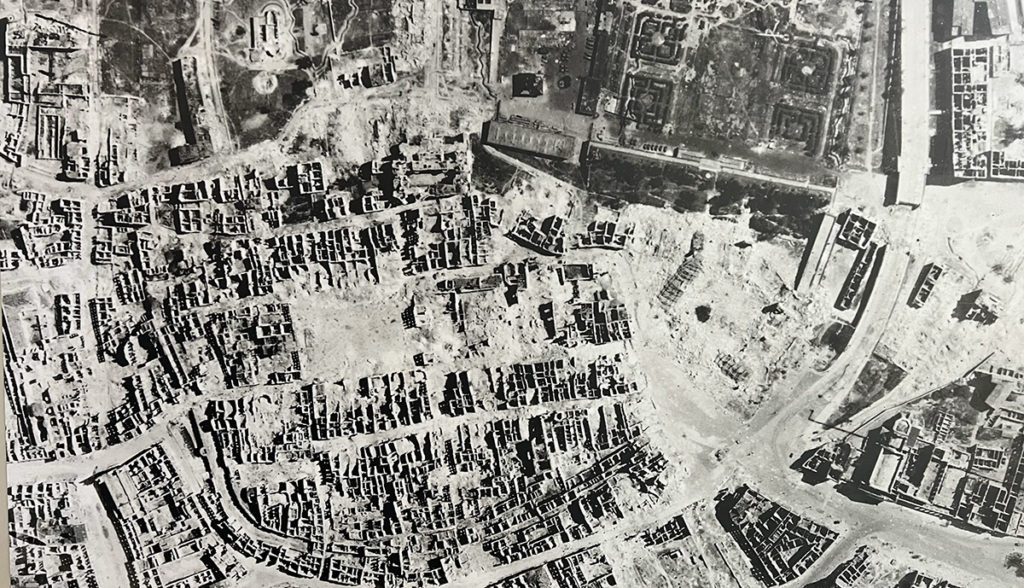
The Warsaw ghetto
In 1940, the Nazis locked up to 500,000 Warsaw Jews in a ghetto: 40% of the inhabitants were thus concentrated in an area that represented only 5% of the city’s surface.
In 1942, 300,000 Jews were deported, then in 1943, the last survivors of the ghetto launched an uprising that lasted one month, it was a battle to die in dignity since the survivors were decimated and the ghetto razed.
The Warsaw Uprising
On August 1, 1944, as the Red Army approached Warsaw, an uprising of Polish forces against the German occupiers began. Instead of supporting the Warsawians, the Russian forces let them fight for 63 days. This inaction was a plan by Stalin to get rid of future anti-communist opposition and to arrive as a liberator, not just an ally. The insurrection resulted in 18,000 Polish soldier casualties and 180,000 civilian casualties.
If you look closely, you will find the “kotwica”, a sign that was the emblem of the underground Polish state, in various places in the city.
The communist period
After the war and until 1989, Poland was under the communist regime. A period that marked the architecture of Warsaw with typical buildings of Stalinist architecture such as the Palace of Culture and Science, an impressive skyscraper of 230 meters high with no less than 3288 rooms on 42 floors!
12 must-do activities in Warsaw
Go to the Old Town
With its colorful houses, palaces and baroque churches, the old town is the most charming district of Warsaw and therefore also the most touristic! Despite the crowds that are often present, it is an essential visit of the Polish capital.
Entirely destroyed during the Second World War, it took thirty years to rebuild the old town, faithfully to the original architecture. So much so that the district has been classified by UNESCO as an “outstanding example of almost total reconstruction of a sequence of history”.
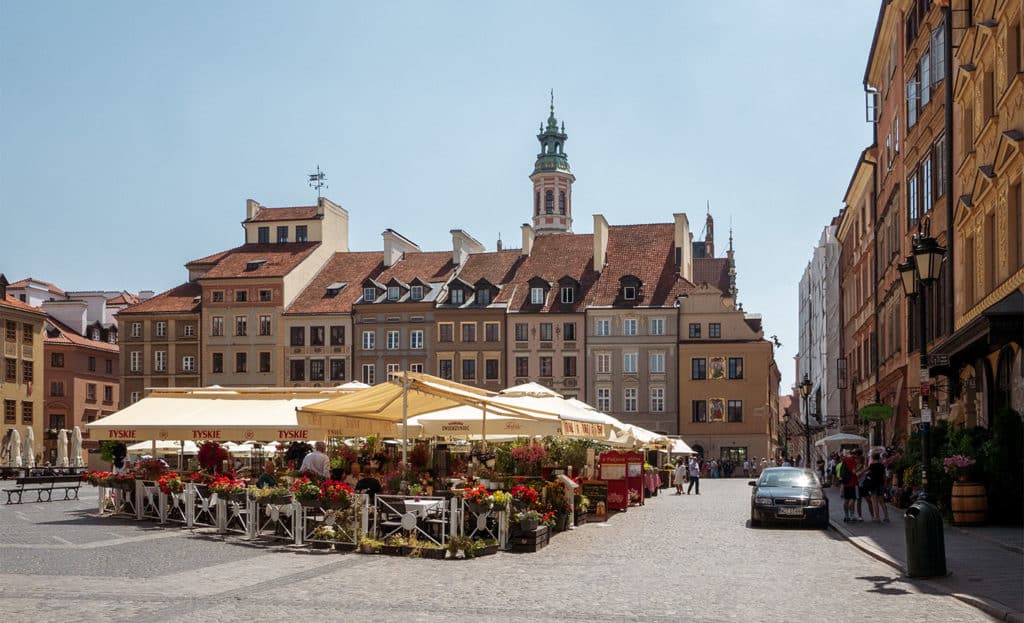
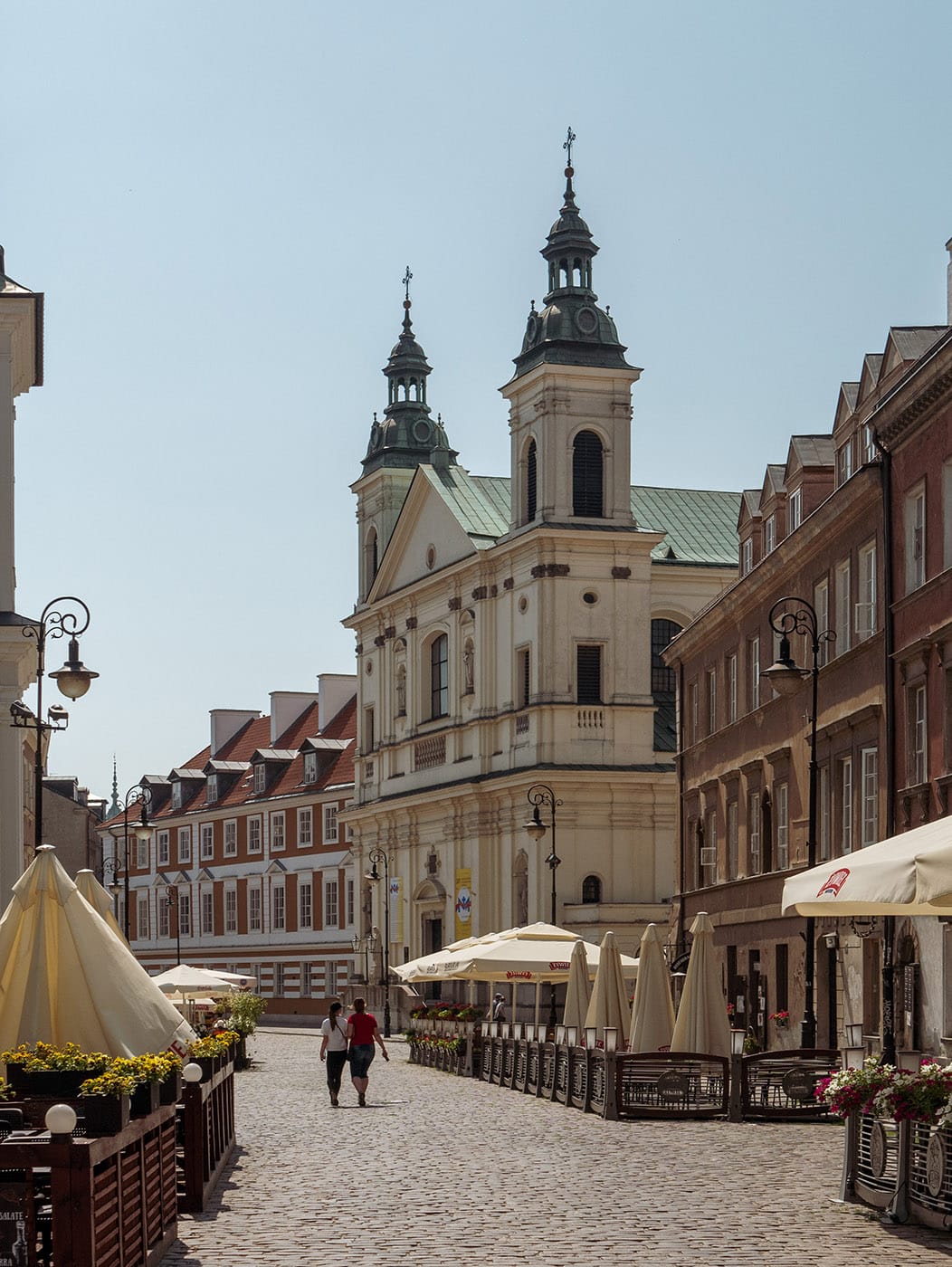
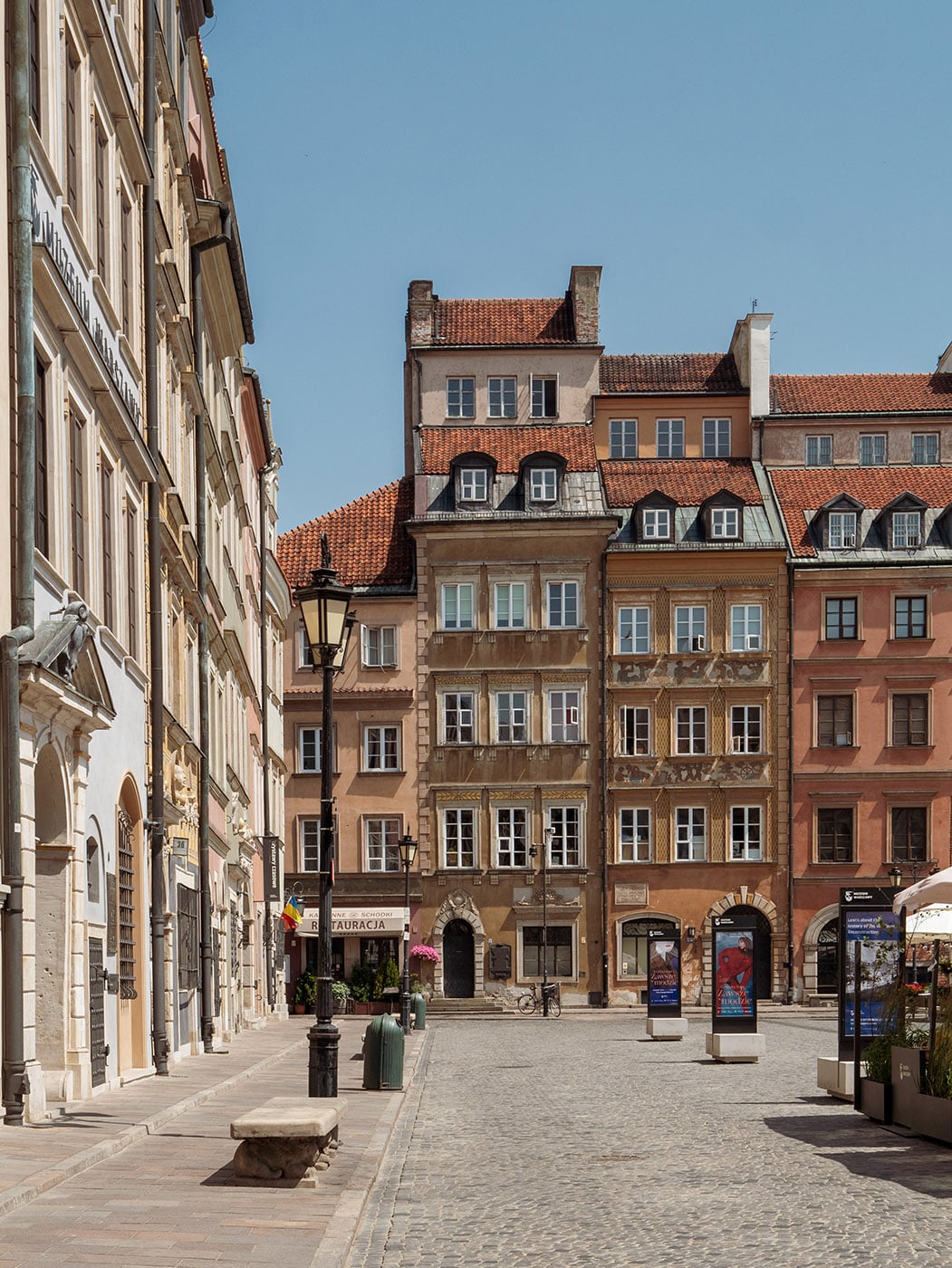
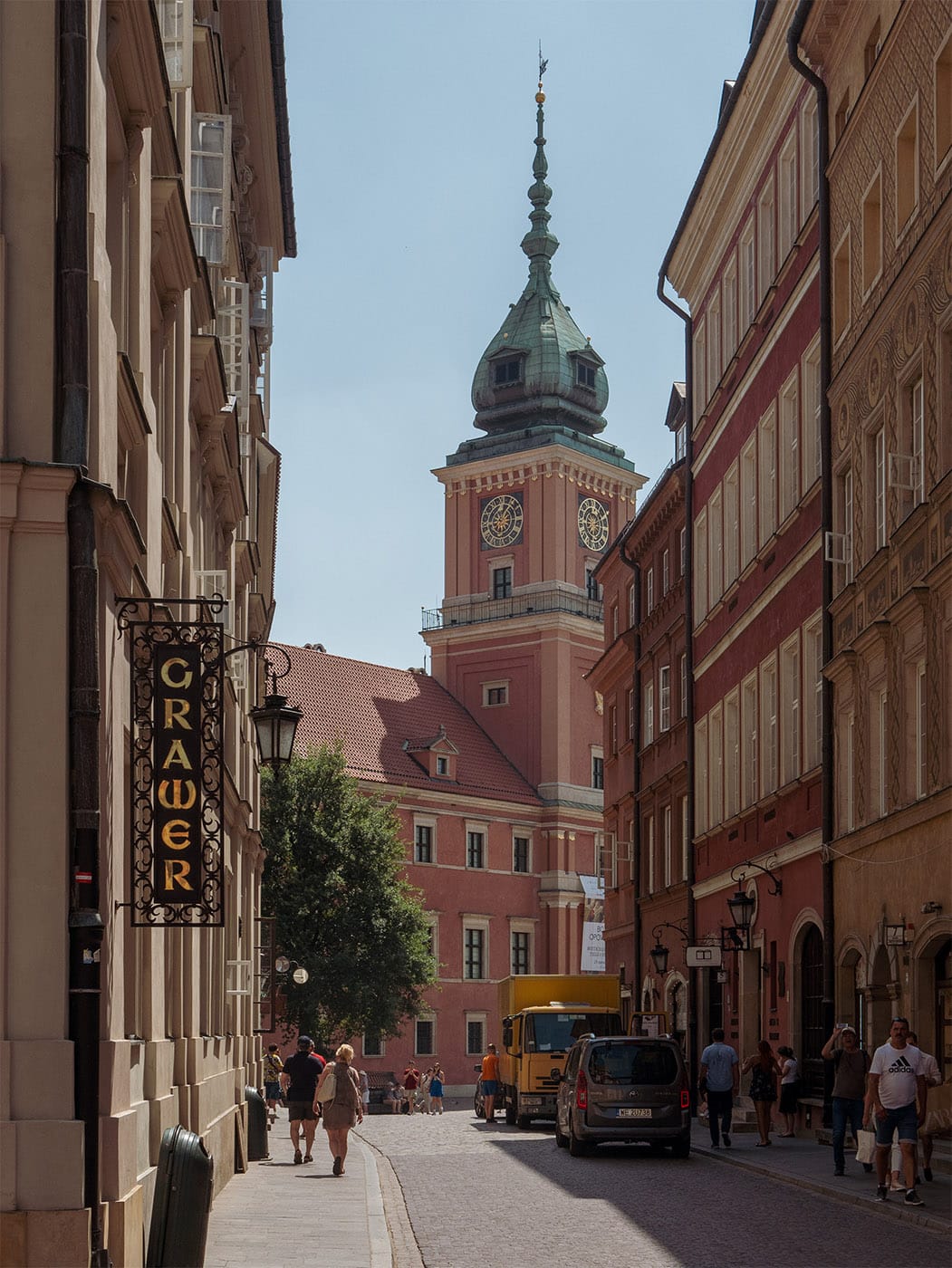

Open your eyes!
If this district has been completely rebuilt, you can still find some traces of the first buildings. Here and there, some pieces recovered from the ruins could be reused. Some of them bear the scars of the fighting that took place here, with several bullet holes.
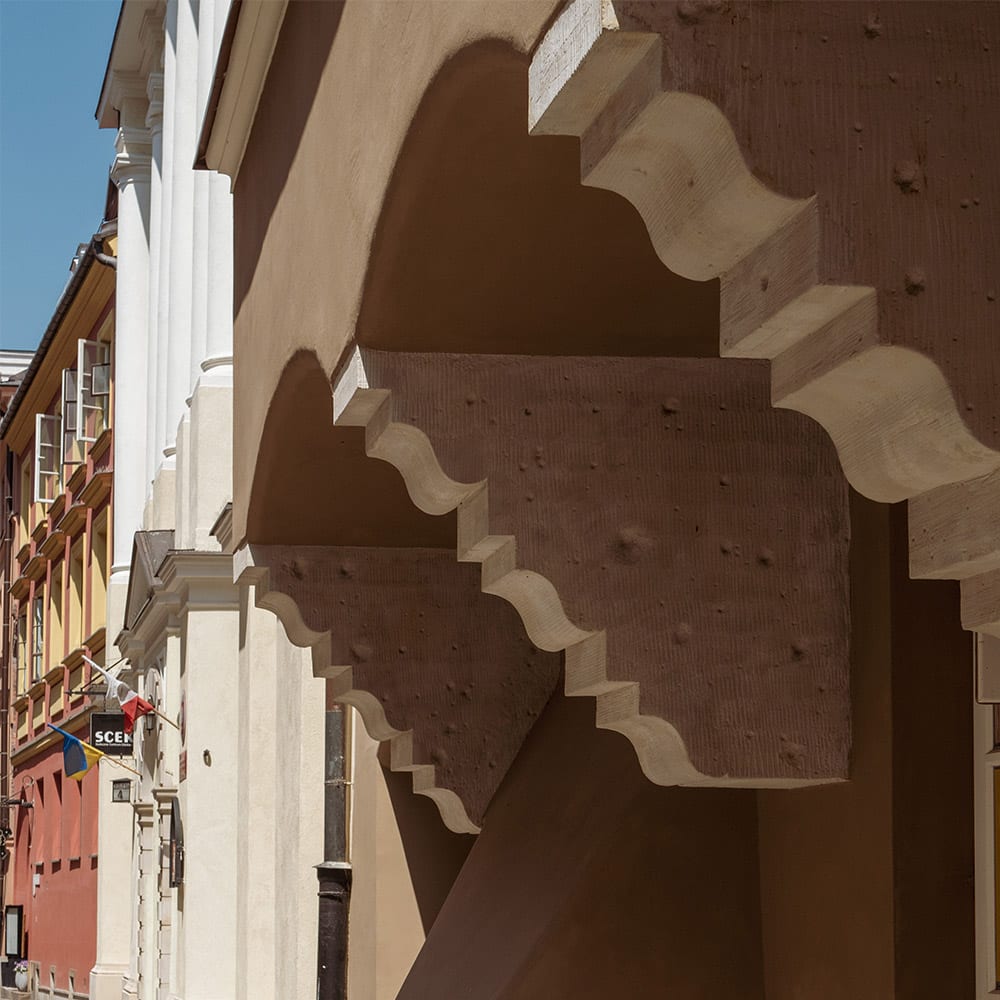
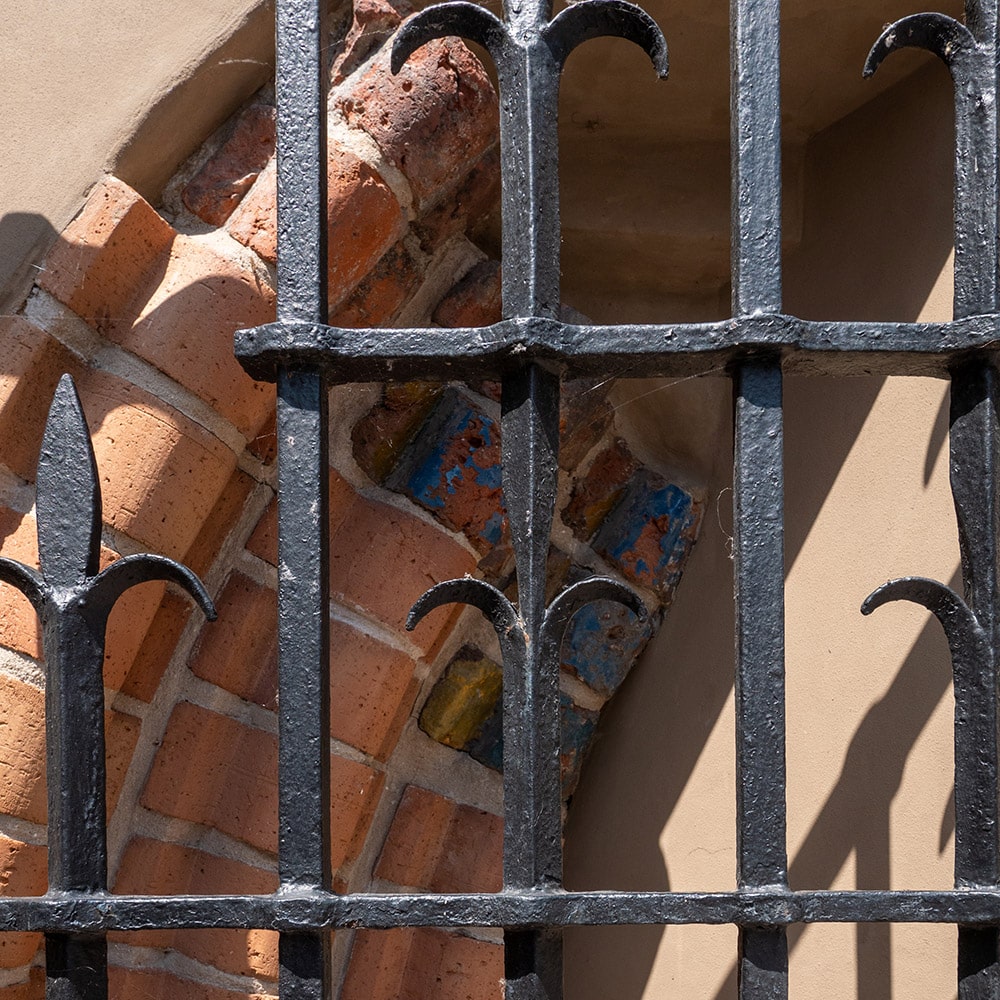
The market square is the epicenter of this charming district where you will be able to admire the statue of the Mermaid of Warsaw, but take time to stroll in the various alleys which surround the square, more intimist but just as charming.
The legend of the Mermaid of Warsaw
This mermaid equipped with a sword and a shield is the symbol of Warsaw, you will find it represented in many places. Legend has it that a mermaid had settled in the Vistula (the river that runs through Warsaw) before being captured by a merchant who locked her in a box. Saved by a young fisherman who came to rescue her, she promised to watch over the city in gratitude.
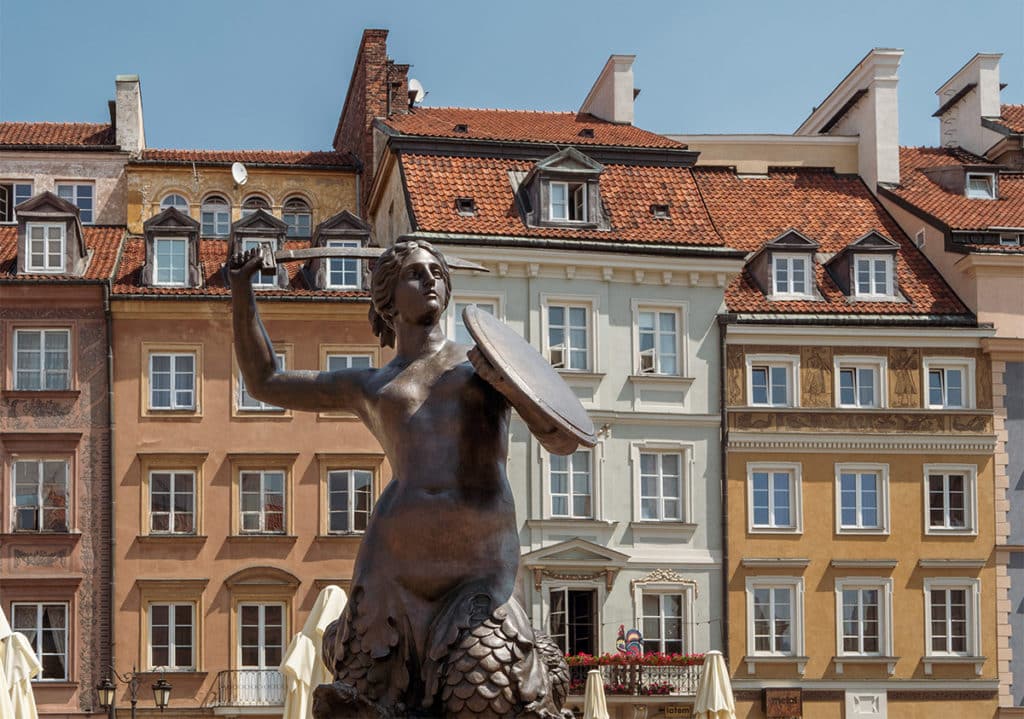
On your way to the Royal Palace, climb the bell tower of the church of Saint Anne, which offers a beautiful view of the Palace Square. Please note that credit cards are not accepted on site, but you can pay in euros (€2.5 per person).
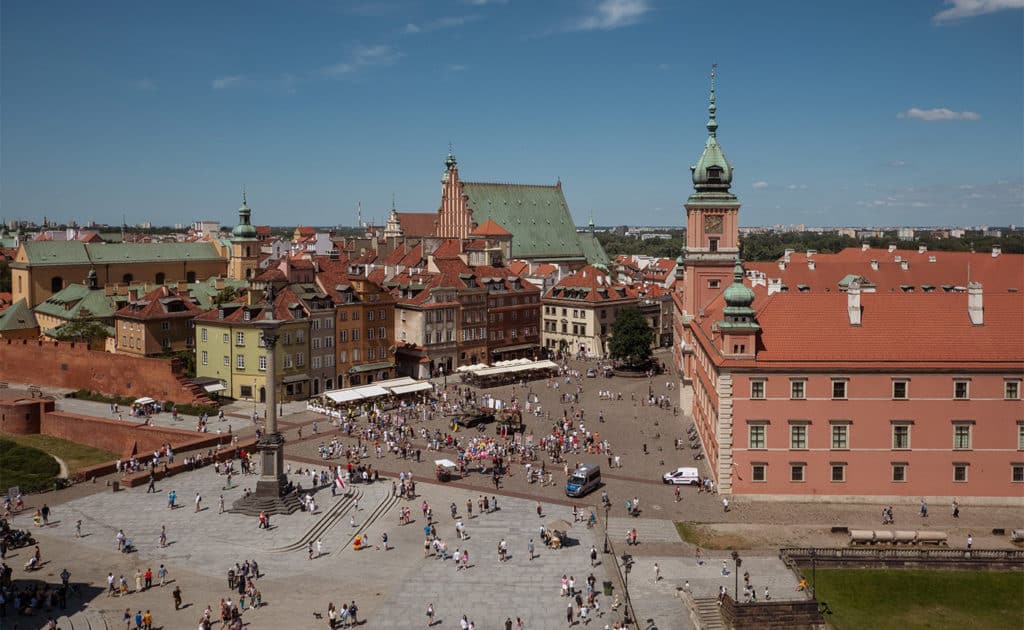
Visit the Royal Palace
One of the most beautiful symbols of the reconstruction of Warsaw is certainly the Royal Palace. Severely damaged by a bombing in 1939, it became in 1944 the target of German engineers who destroyed it entirely. After the war, the communist government opposed its reconstruction until the 1970s. Without public aid, it is finally erected again by the tremendous work and financing of many Poles.
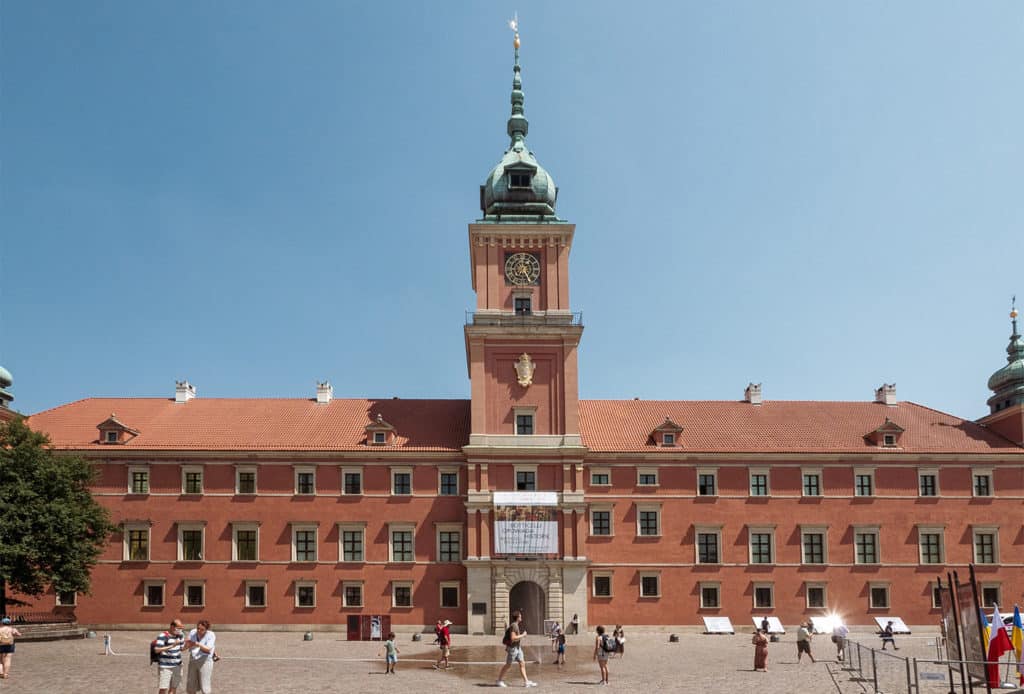
The splendor of the Palace has been restored with its ceremonial rooms, the throne room and the senators’ room where the first constitution in Europe was signed in May 1791 and the second in the world after that of the United States!
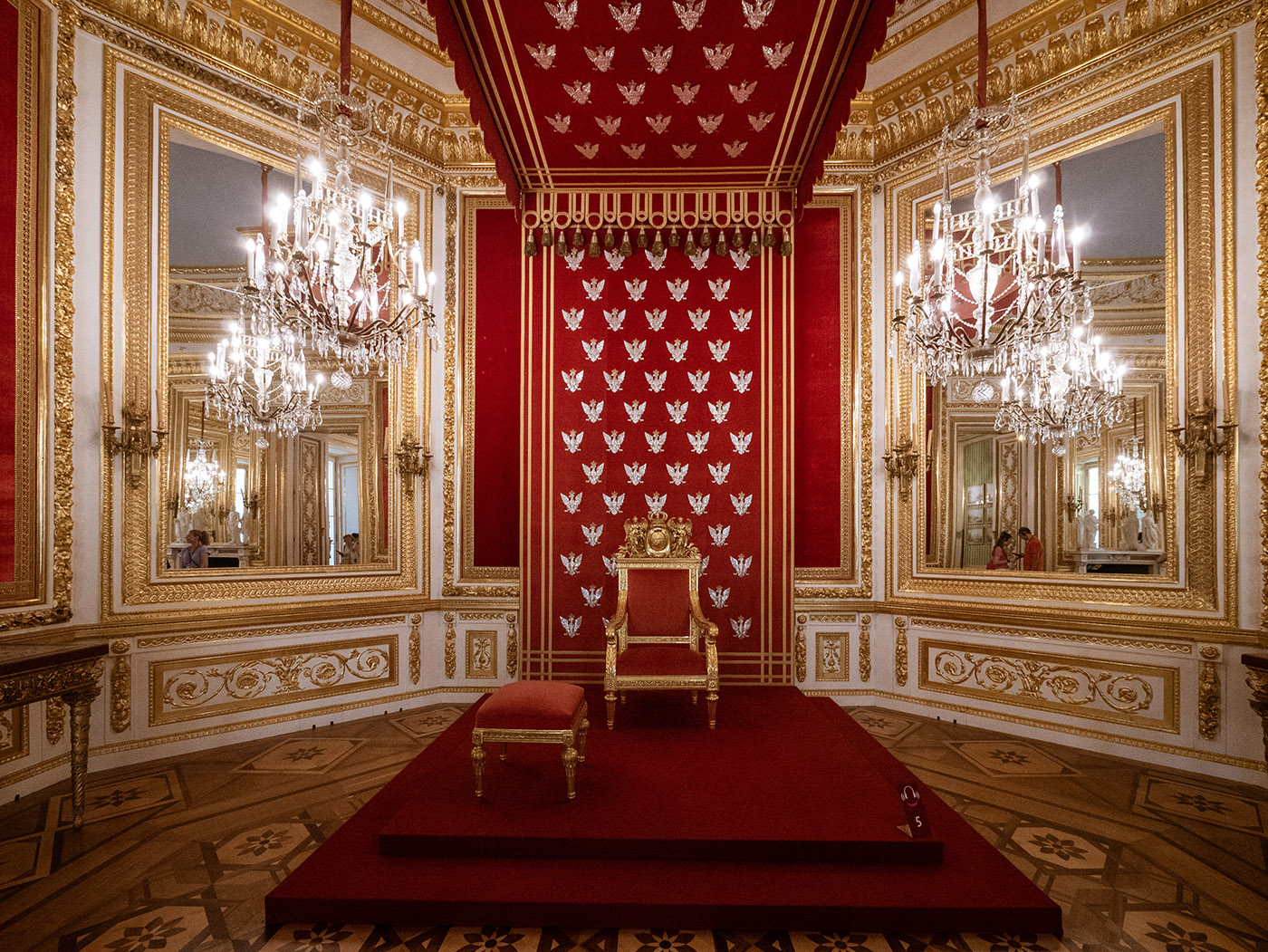
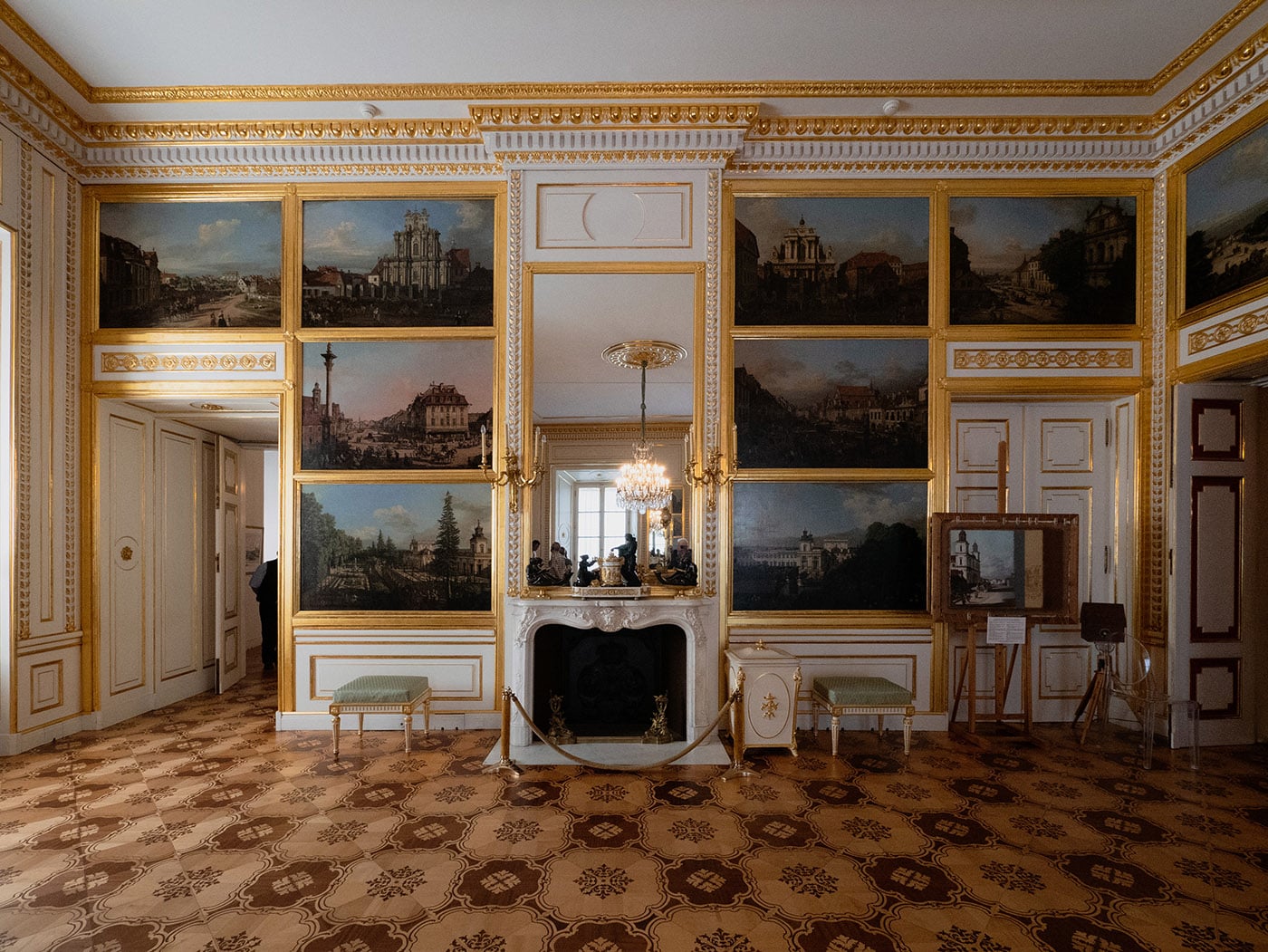
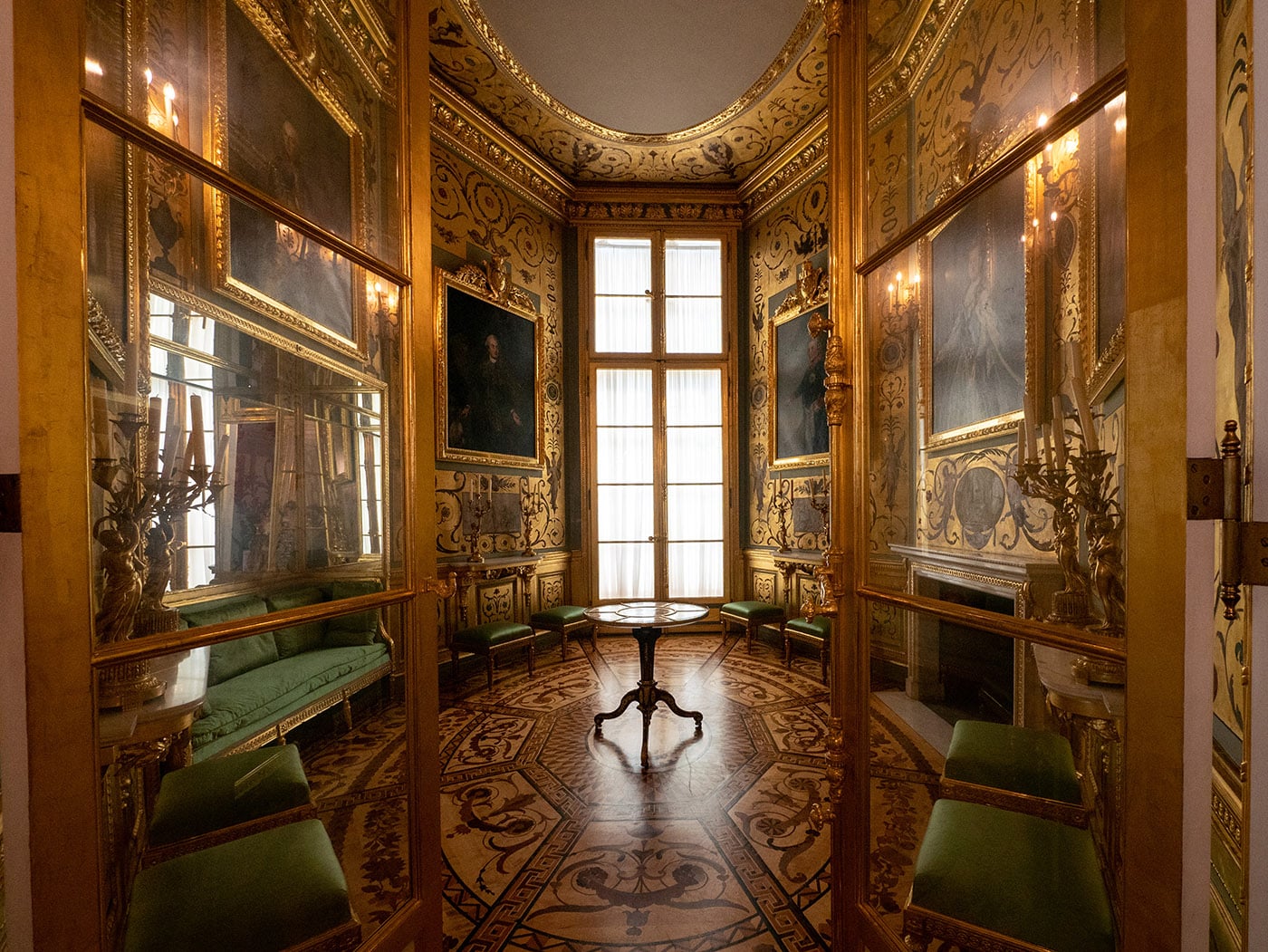
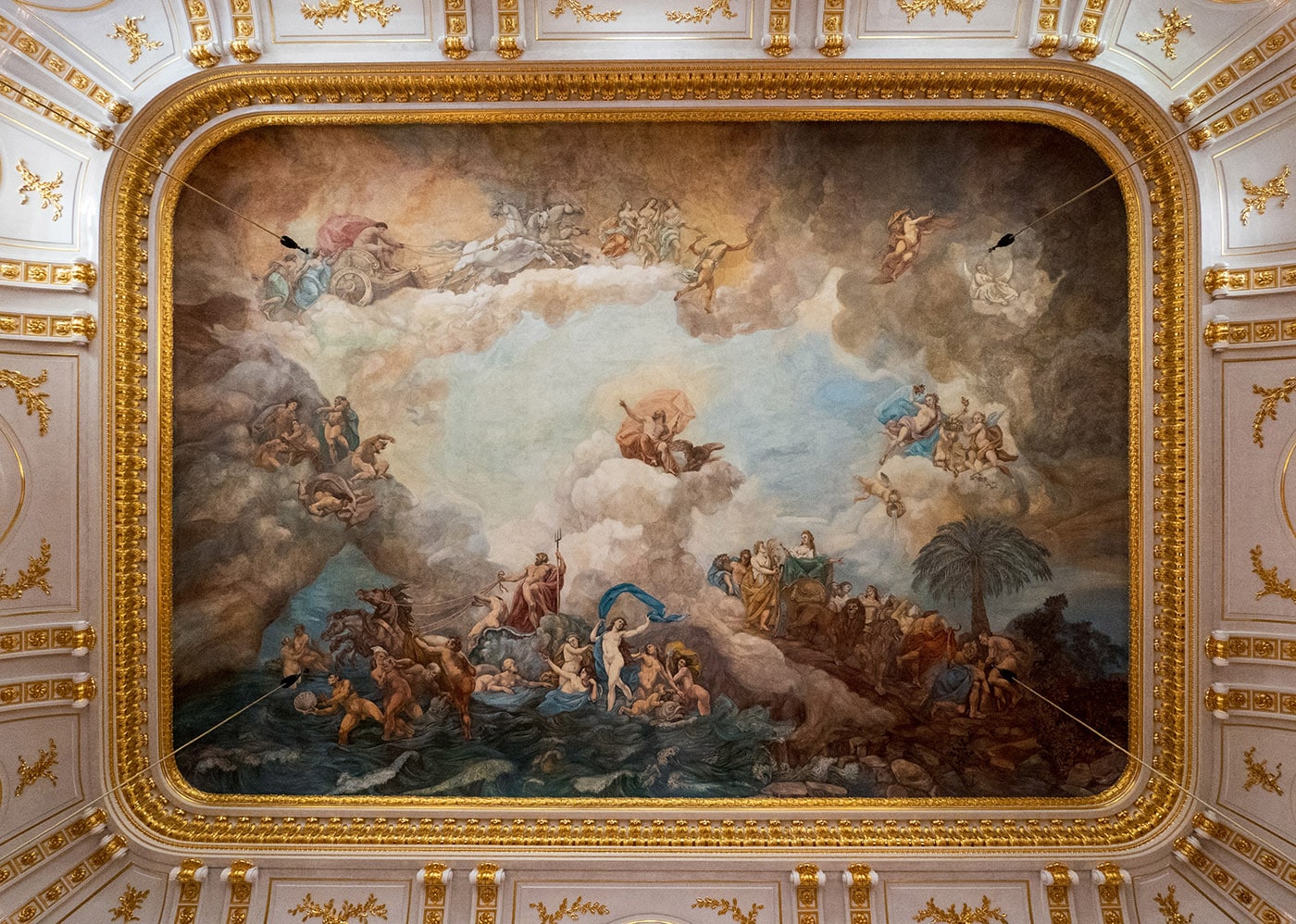
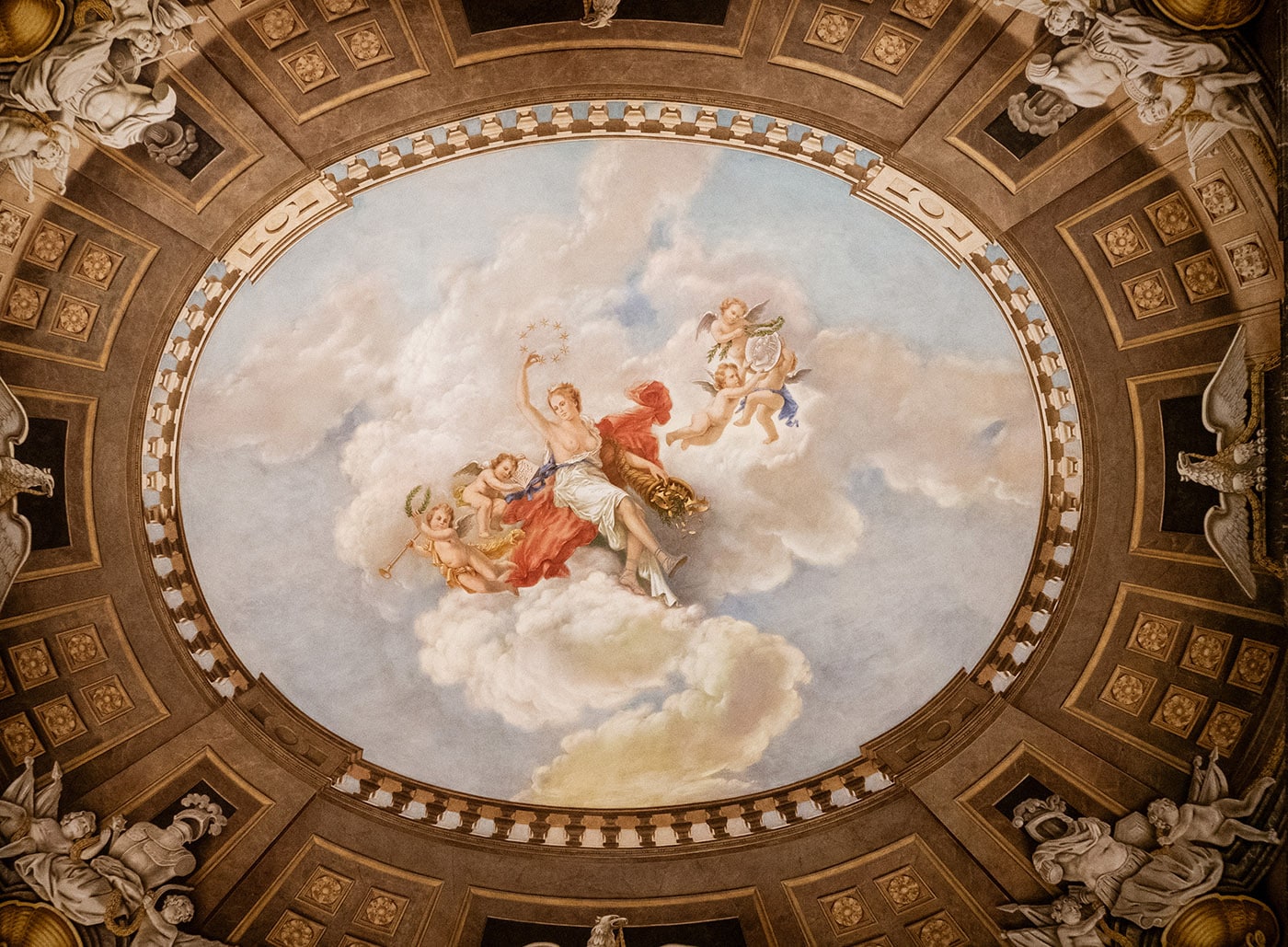
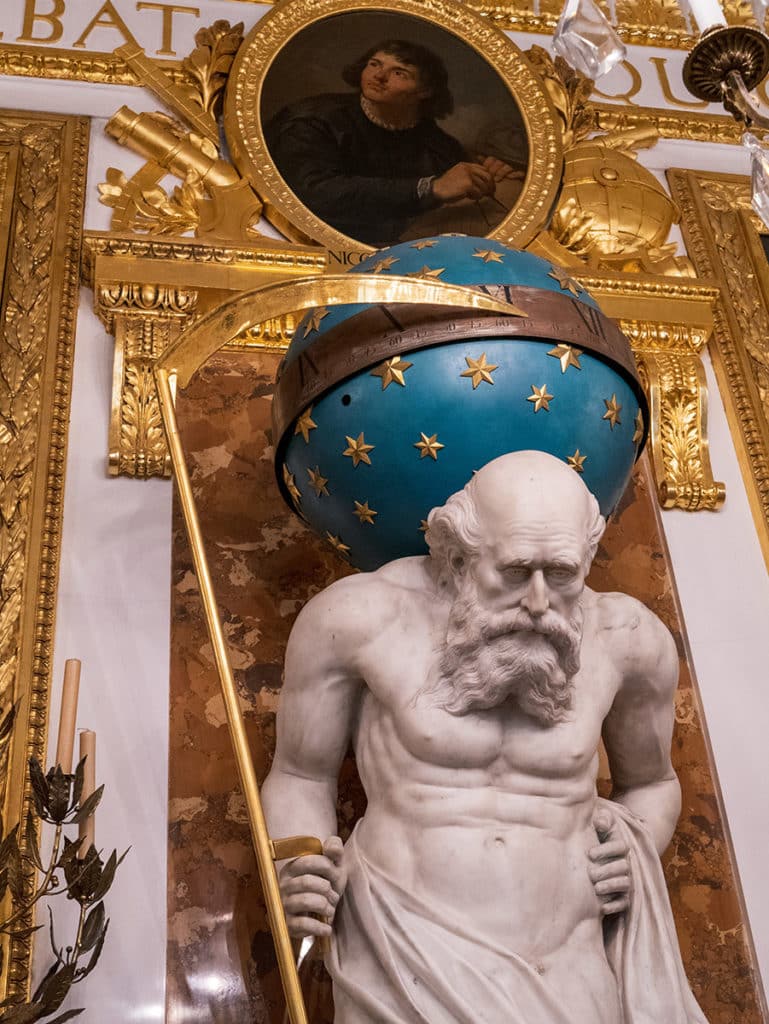
11:15 am: the symbolic hour
In one of the rooms, you can see a statue of Cronos, the god of time, which marks 11:15, recalling the time of the German bombing in 1939 that destroyed the palace.
The Palace’s collection of paintings also includes two remarkable paintings by Rembrandt, which are a must-see.
Address: plac Zamkowy 4
Website: https://www.zamek-krolewski.pl/
Contemplating the view of the city from the Palace of Culture and Science
Impossible to miss this impressive and massive skyscraper! The Palace of Culture and Science is a symbol of Stalinist architecture, offered by Russia to the destroyed city of Warsaw. The paradox of this gift is that buildings that could have been restored had to be totally destroyed in order to build it! Still, with its 231 meters high, it dominates the city. Until the construction of the “Varso tower” inaugurated this year, it was even the highest skyscraper in Warsaw.
Today, the “PKiN” (Palac Kultury i Nauki) houses theaters, cinemas, exhibition spaces, museums… but I especially recommend climbing to the 30th floor to contemplate the view over Warsaw.
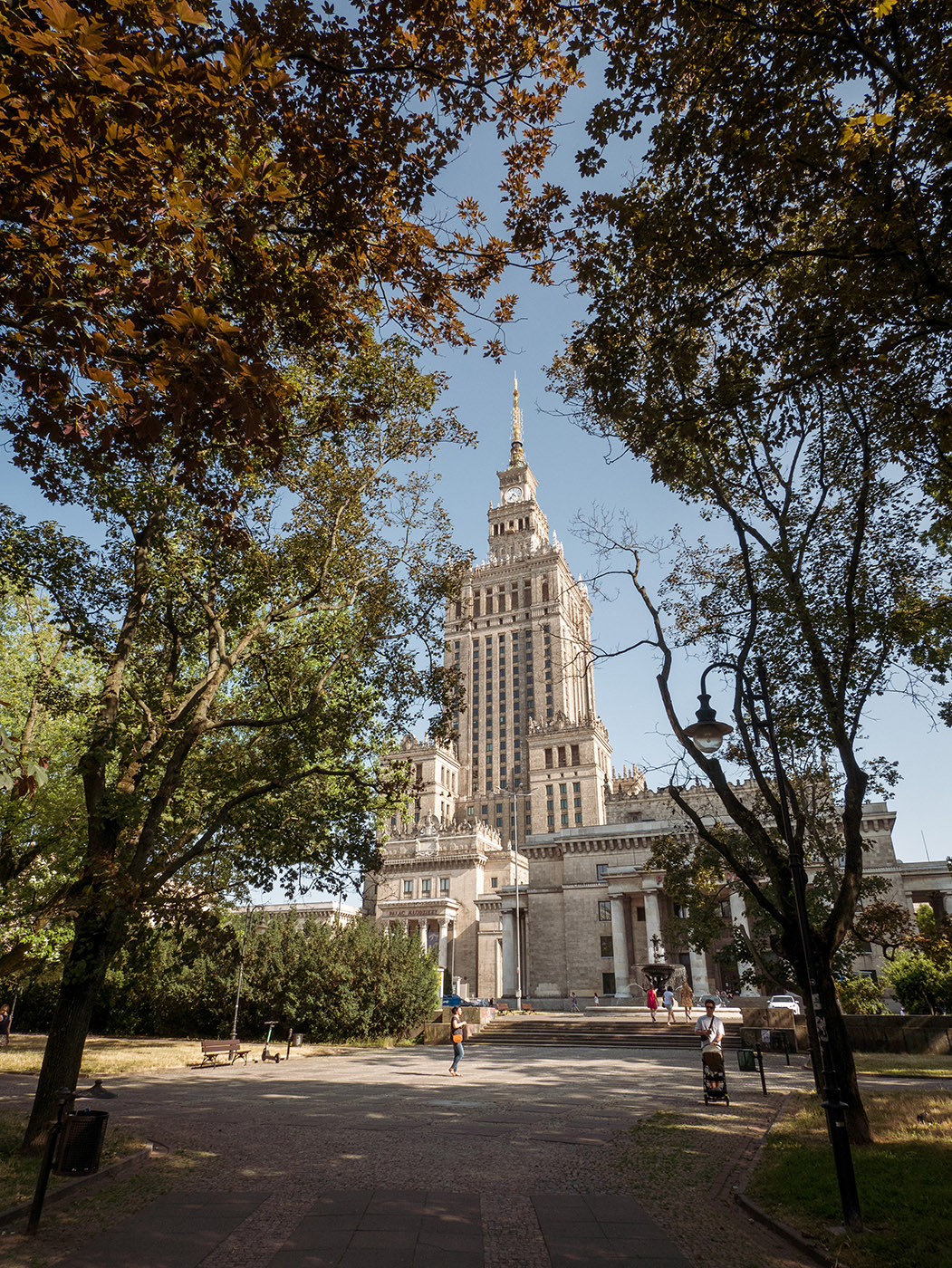
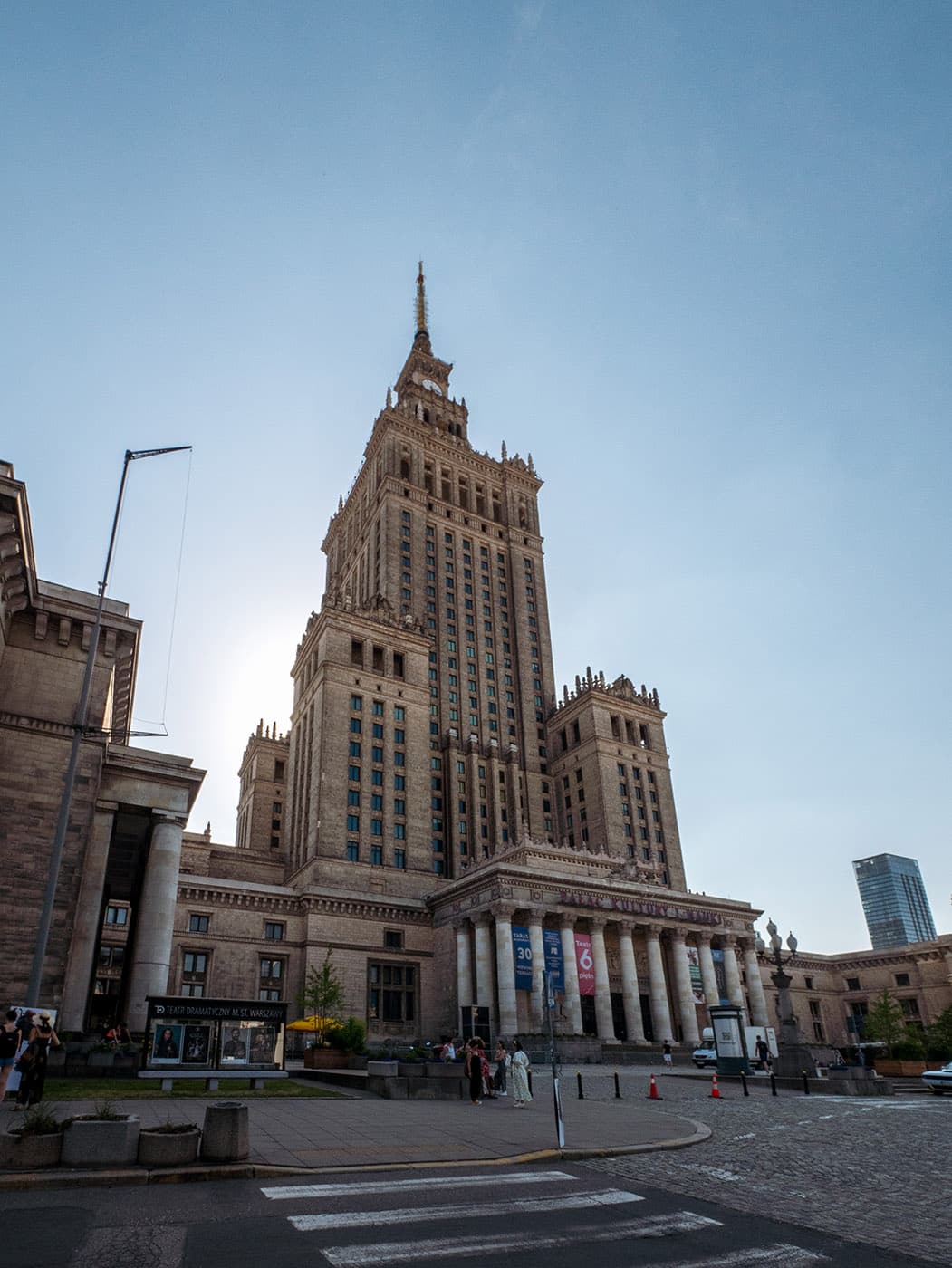
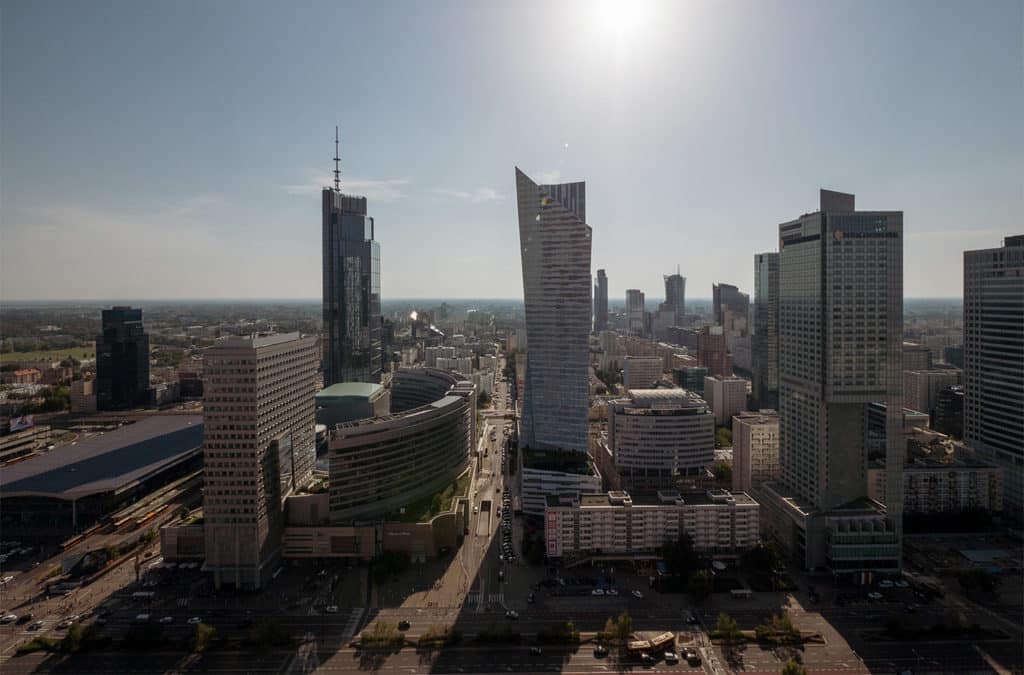
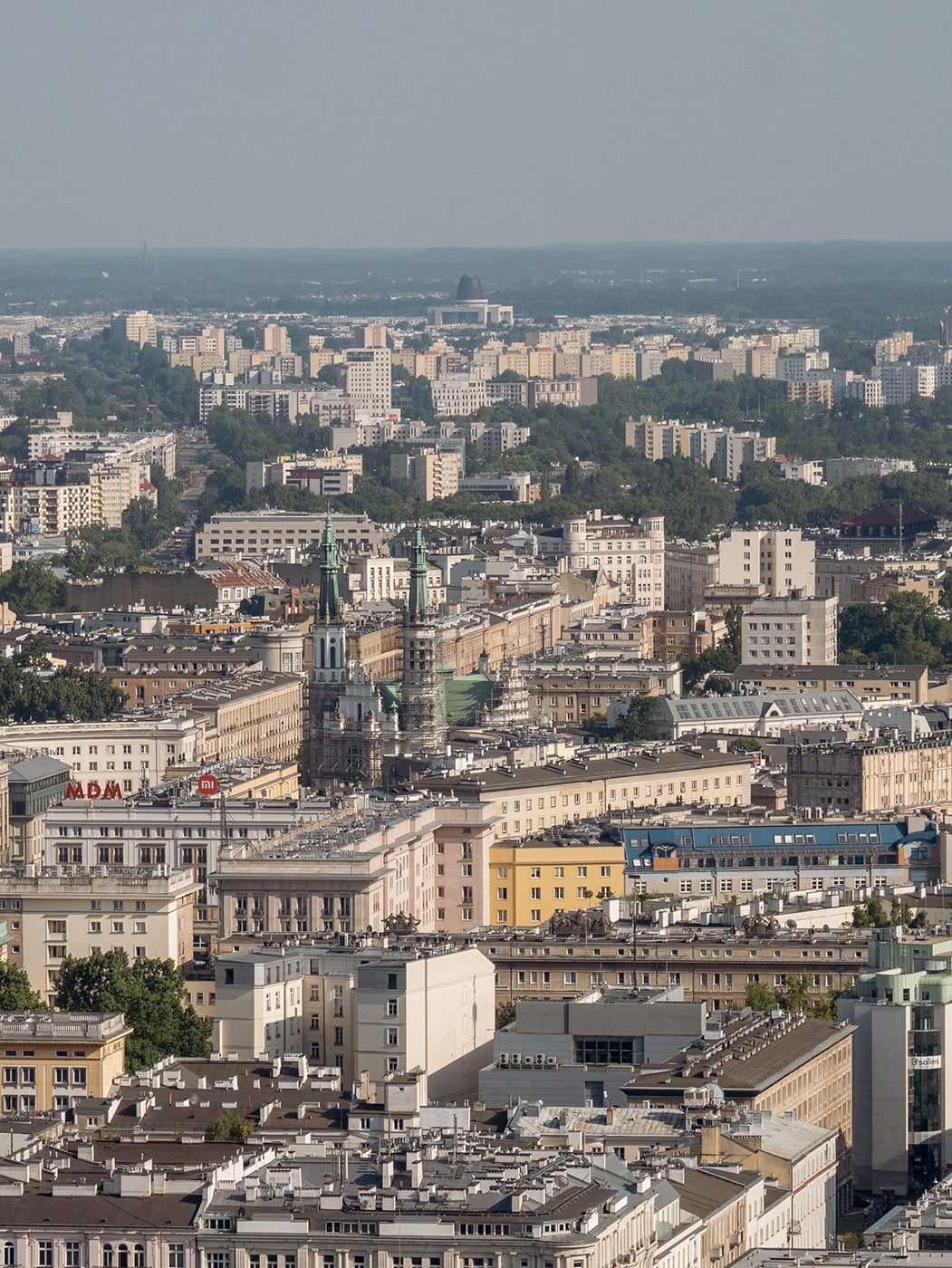
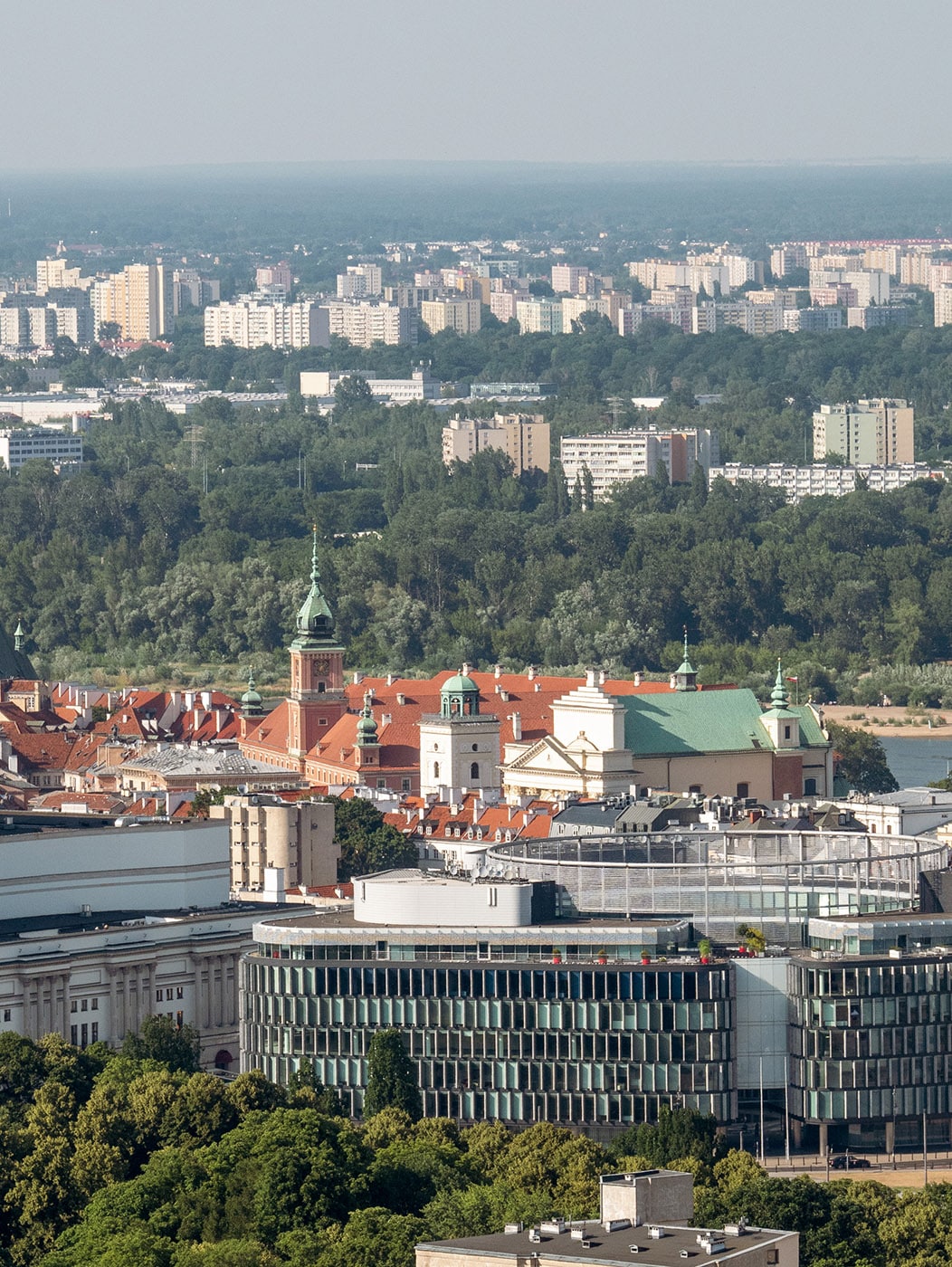
Address: plac Defilad 1
Website: http://www.pkin.pl/
Go and say hello to Marie Curie
One of the most famous personalities in Warsaw is Maria Sklodowska, better known in France as Marie Curie. The two-time Nobel Prize winner and the first woman to be inducted into the Pantheon on her own merits was born in Warsaw.
She was the one who discovered Radium and Polonium, an element she named after her Polish roots. A statue pays homage to her on the banks of the Vistula and a museum is dedicated to her in the old town.
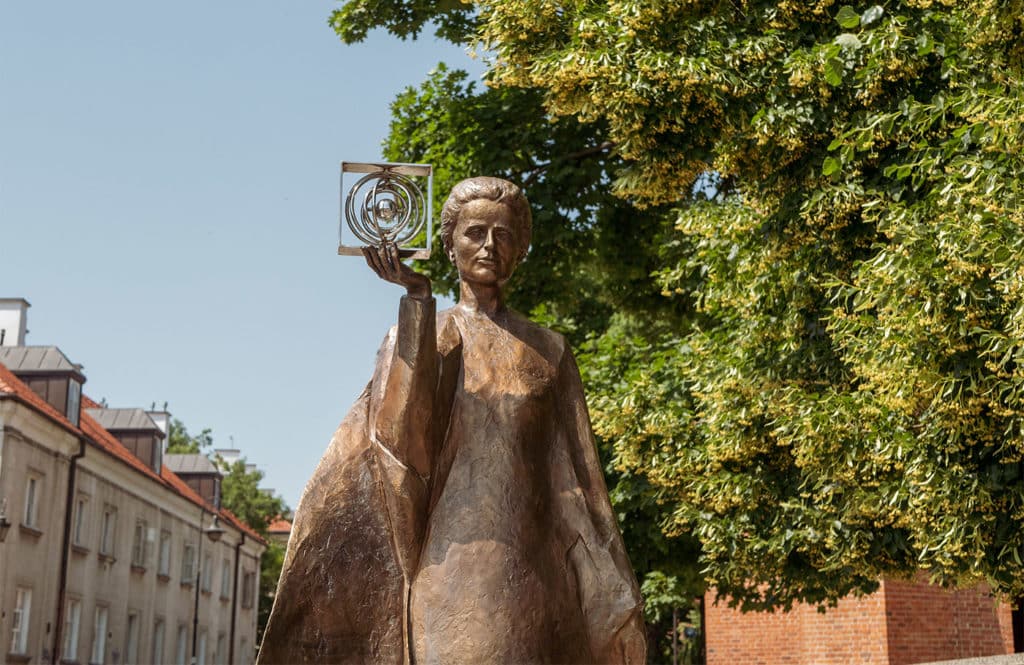
Museum address: Freta 16
Website: http://www.mmsc.waw.pl/
Address of the statue: Kościelna
Visit the Chopin Museum
If Marie Curie is the most famous woman in Warsaw, among men it is Frederic Chopin (1810-1849) who takes the title! The composer was born near Warsaw and lived there as a child before leaving for Vienna and then for France when he was 20.
A heart preserved in cognac!
If Frédéric Chopin is buried in Père Lachaise, his heart has been deposited – according to his last wishes – in Warsaw, in the Holy Cross Church. It is preserved in a crystal urn filled with cognac!
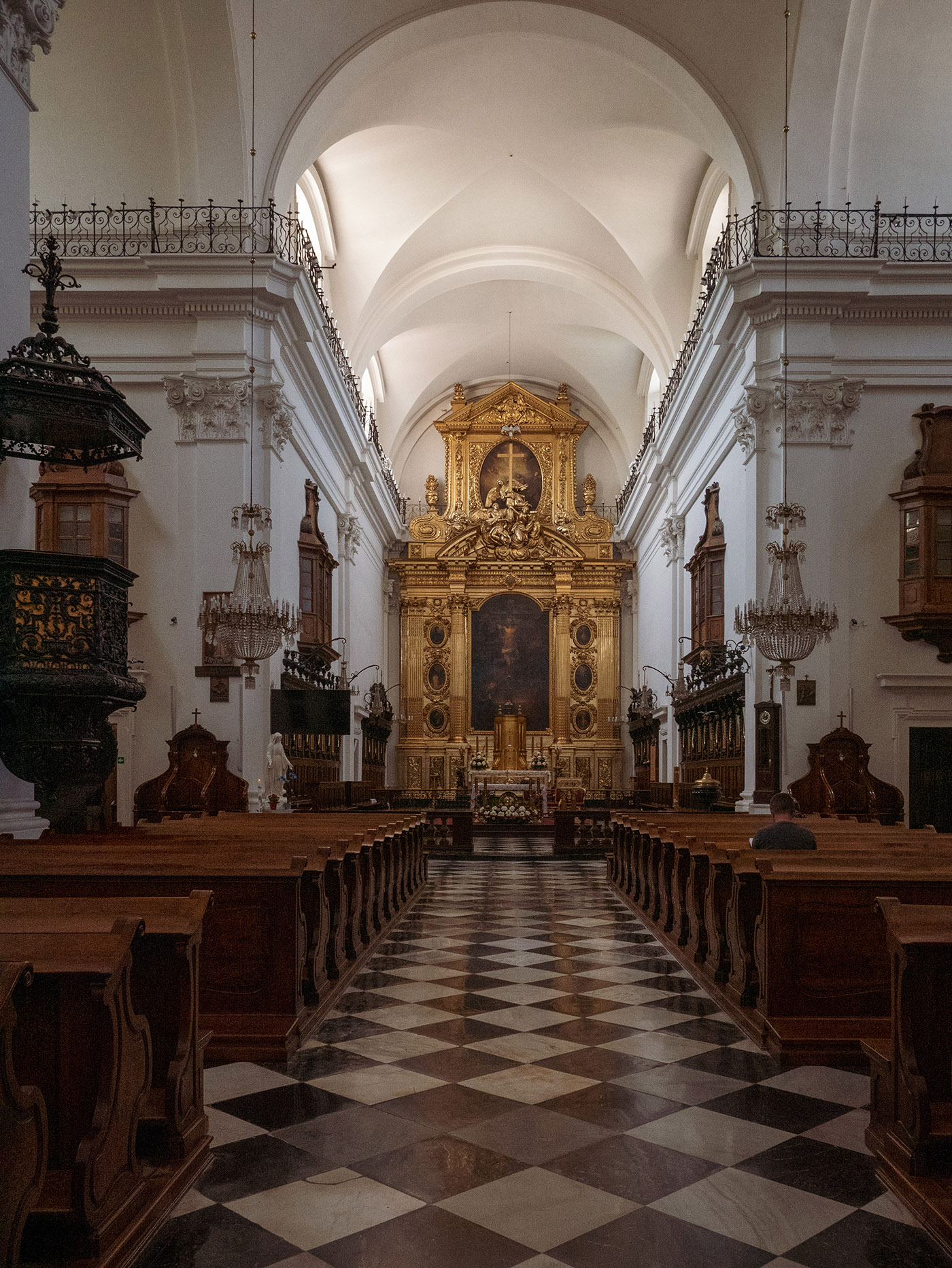

Address: Krakowskie Przedmieście 3
The exciting Chopin Museum tells the story of the composer with many interactive devices and several personal objects that belonged to him. Among other things, you can see one of his pianos or his death mask.
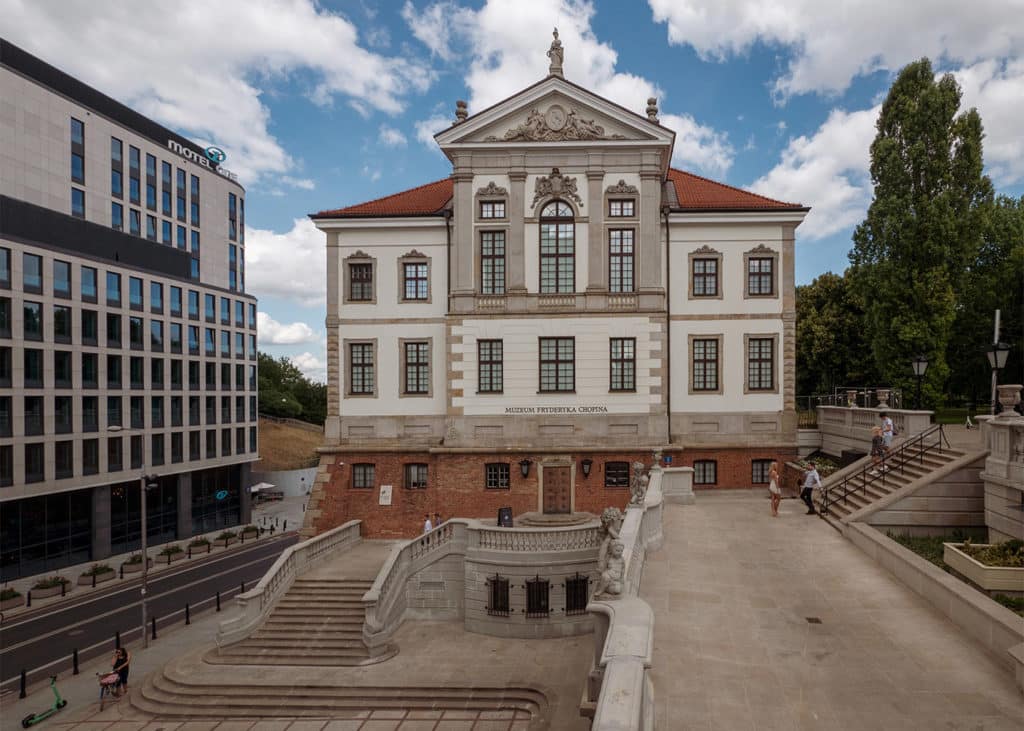
Address: Pałac Gnińskich, Okólnik 1
Website: https://muzeum.nifc.pl/
Take a walk in Lazienki Park
This vast park of 76 hectares is the green lung of Warsaw. It is a charming place where it is not uncommon to come across squirrels, peacocks or ducks! A must-see is the Łazienki Palace located in the heart of the park, which is wonderfully reflected in the lake.
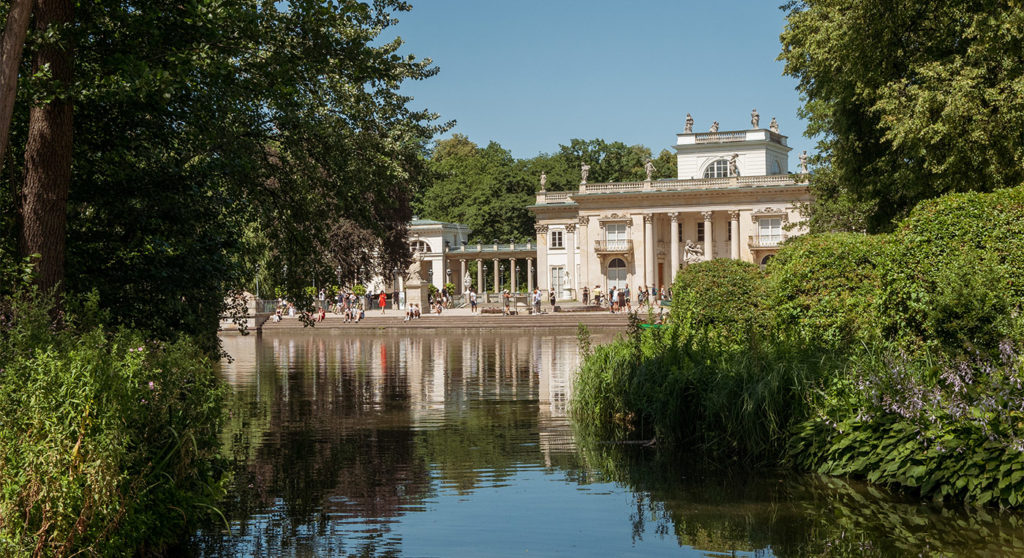

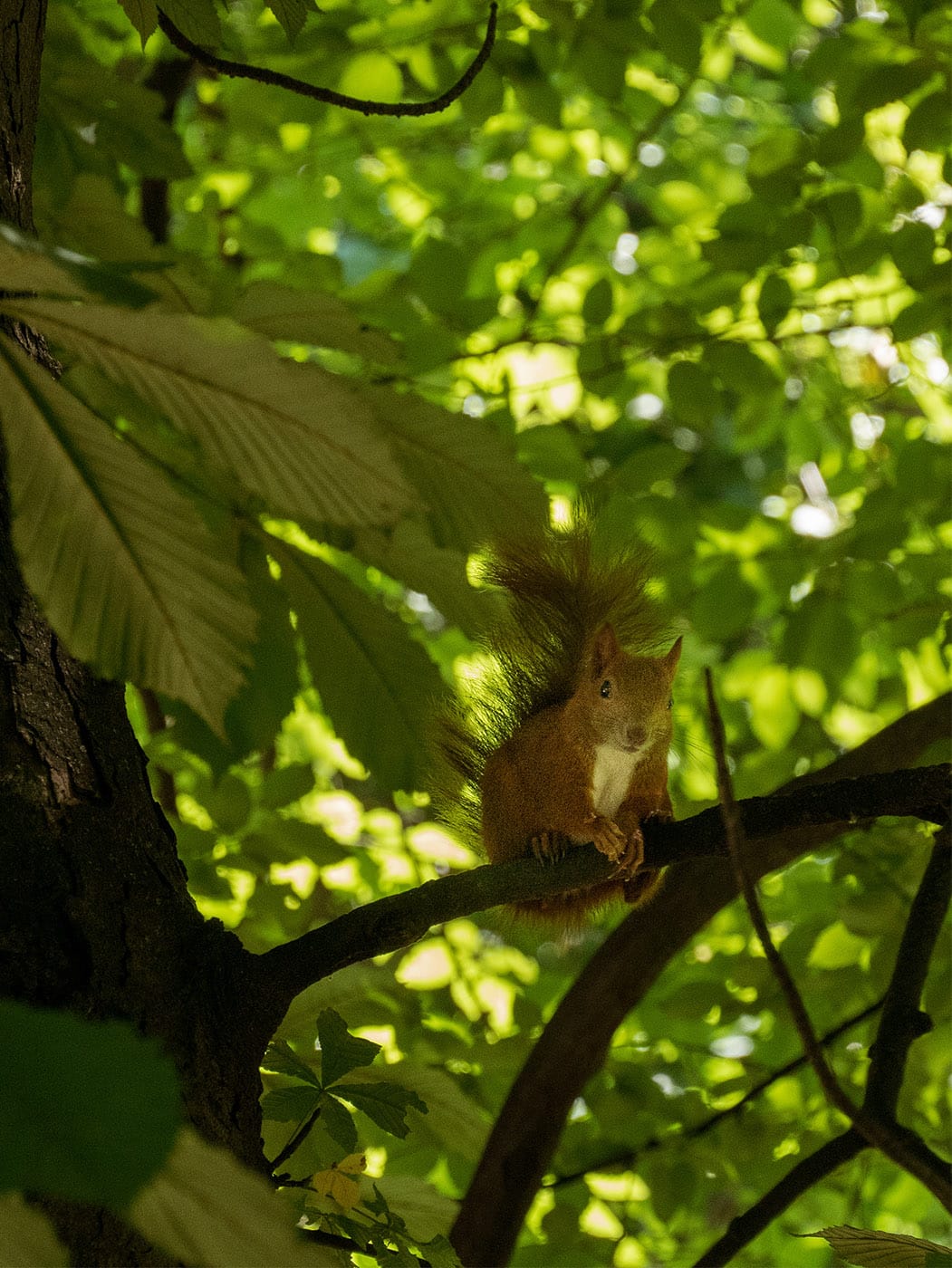
In the summer (from mid-May to mid-September) , go in front of the monumental statue of Chopin where concerts are given free of charge by internationally renowned pianists. To know more
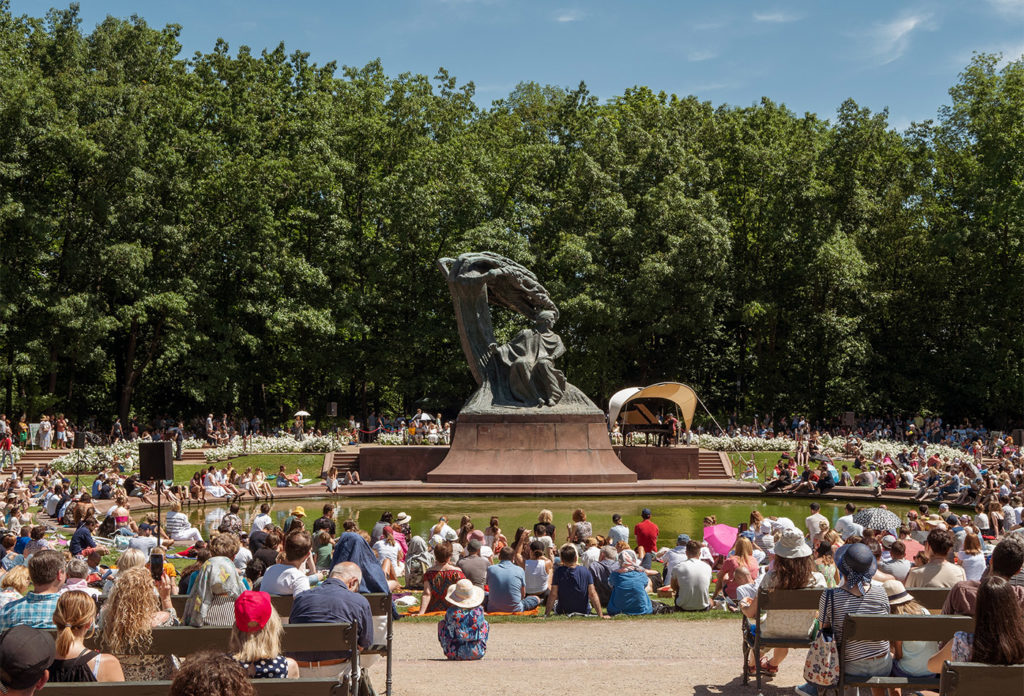
Go to the Norblin Factory
A reminder of the city’s industrial past, the Norblin Factory is a former silverware factory transformed into a living space with stores, a cinema, a market and restaurants.
You can also discover a glimpse of Warsaw during the interwar period in the “Retro Warsaw” exhibition where archival photographs and films are projected to give an idea of the atmosphere and architecture of the city after its destruction.
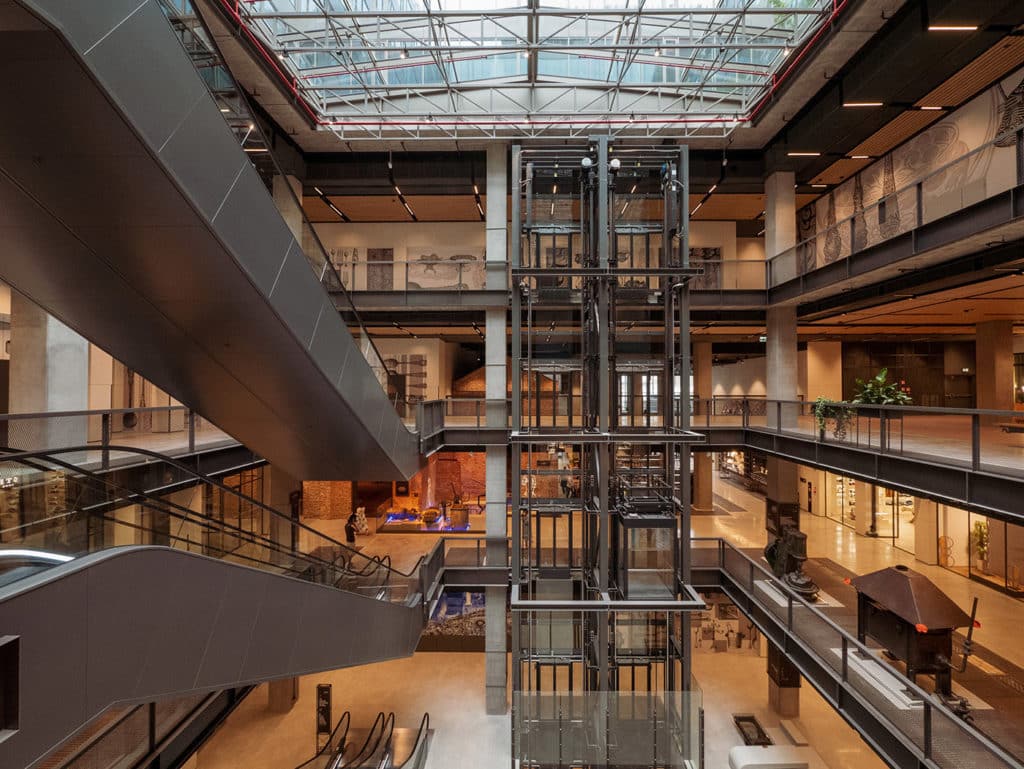
Address: Żelazna 51/53
Website: http://fabrykanorblina.pl/
Entering the polytechnic school
Visiting a school is a strange thing to do! But the building of the Warsaw Polytechnic is a jewel. The inner courtyard covered by a huge glass roof is bathed in light, it is a must see.
The place being not intended for tourism, it is however advisable to be discrete and to limit the photographs, at the risk of having troubles with the guards…
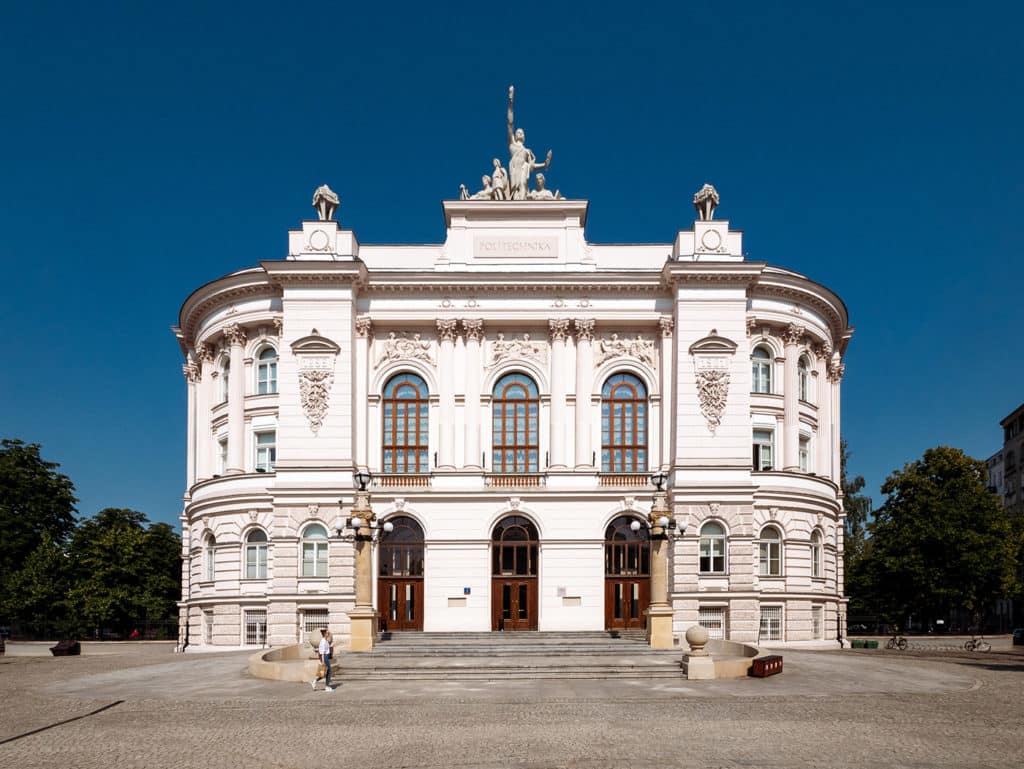
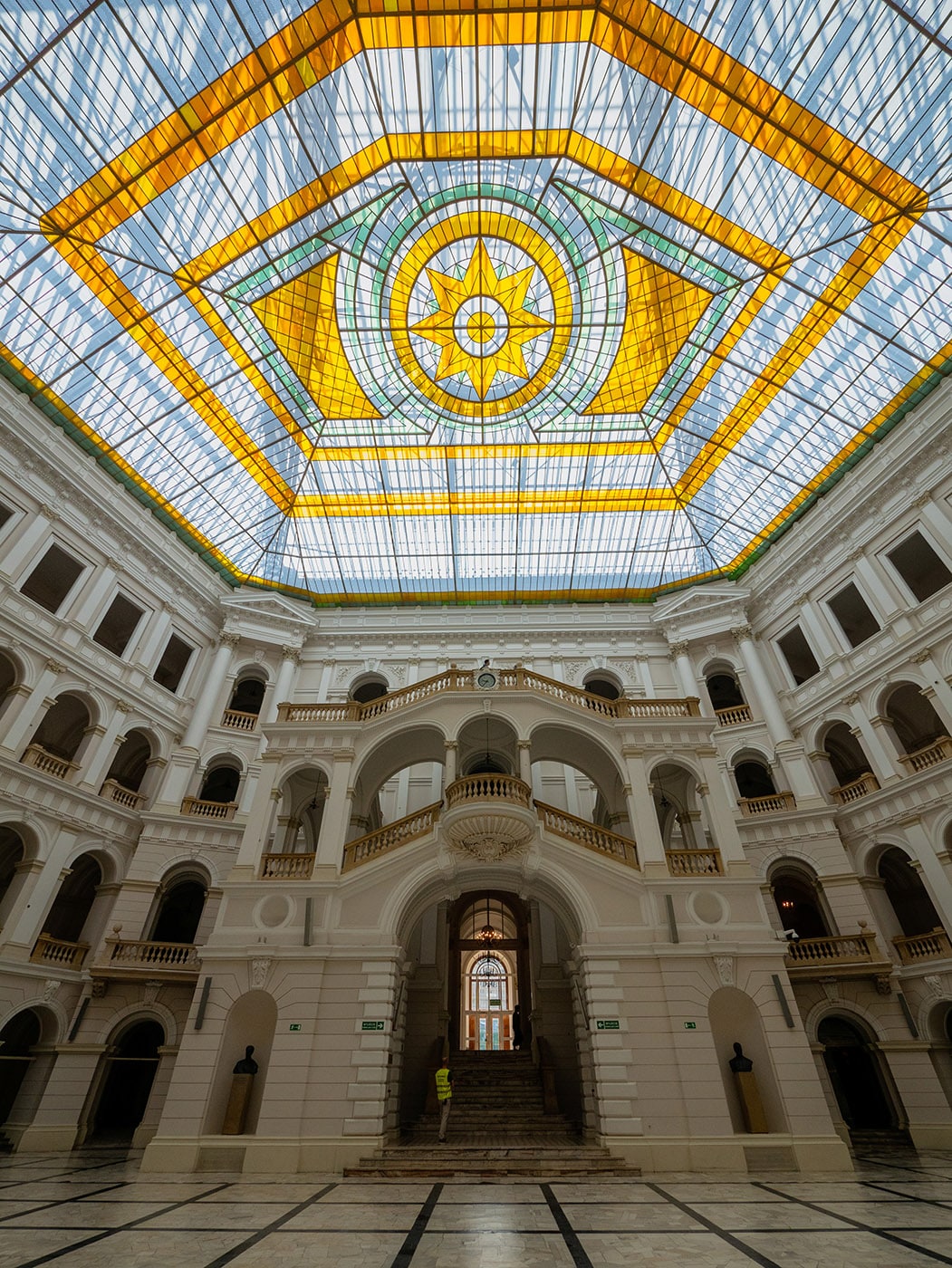
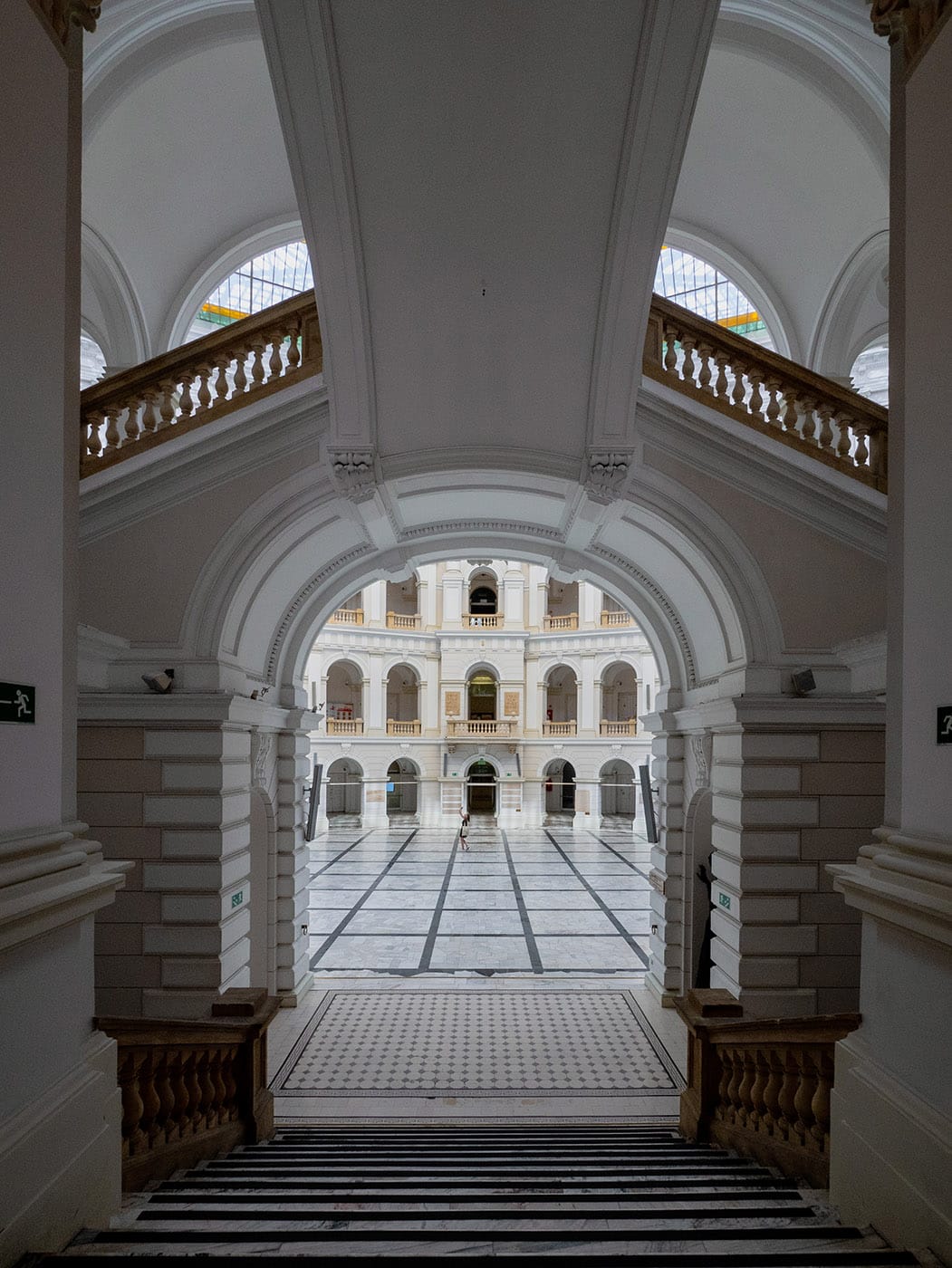
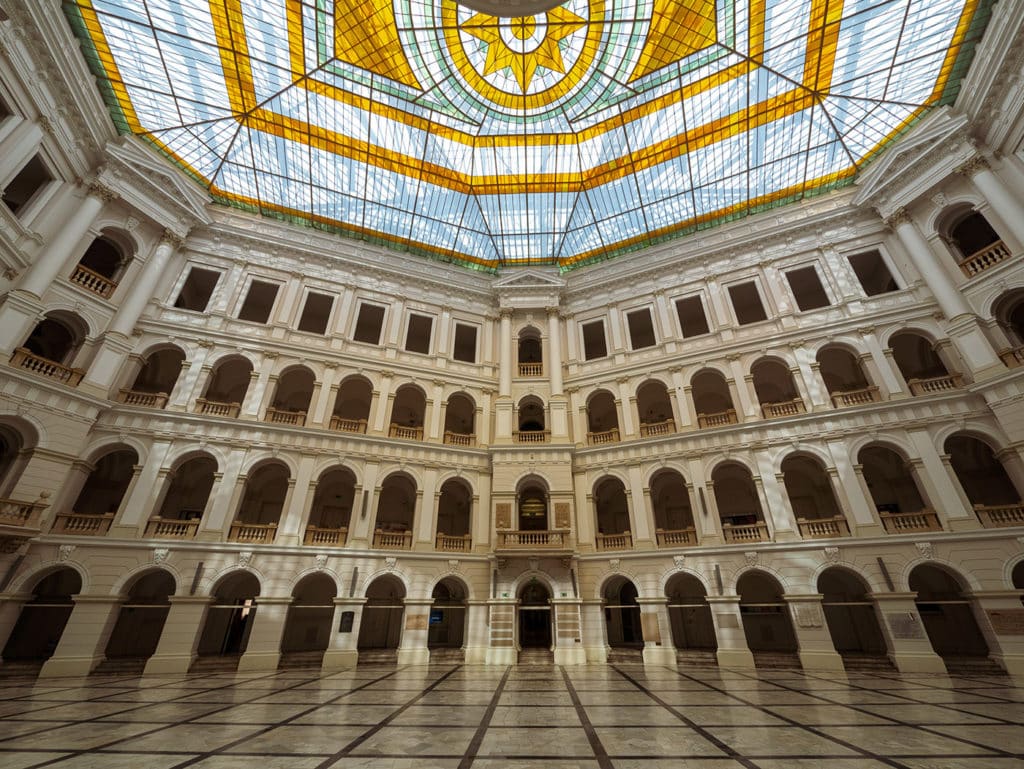
Address: plac Politechniki 1
Stroll on the quays
The banks of the Vistula are very pleasant, they constitute a long promenade of several kilometers where many Warsaw residents come to practice their sport during the day, and to relax with friends in the evening.

Visit the National Museum in Warsaw
With nearly 830,000 works in its collections, the National Museum in Warsaw (MNW) is one of the largest museums in Poland. You will find paintings by Polish masters from the 17th to the 20th century as well as some paintings by European artists.
One of its masterpieces is a monumental painting by Jan Matejko depicting the Battle of Grunwald.
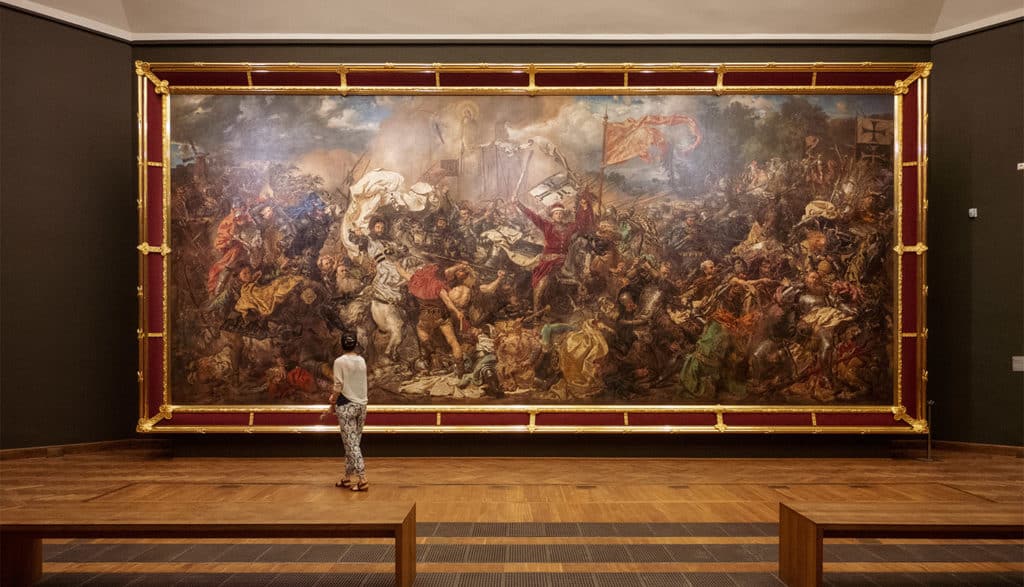
Among my personal favorites, I recommend you to check out the works of Podkowinski, Pareńskiej, Anna Bilinska-Bohdanowicz, Malczewski, Cranah and Bellotto.
Address: al. Jerozolimskie 3
Website: https://www.mnw.art.pl/
Entering the University Library of Warsaw
Contrary to what its name might suggest, this library is not only for students: all Warsaw citizens can become members. It is a place of knowledge but also a place of life.
Built at the end of the 90’s, it is a beautiful modern building whose roof is a park suspended above the city and freely accessible.
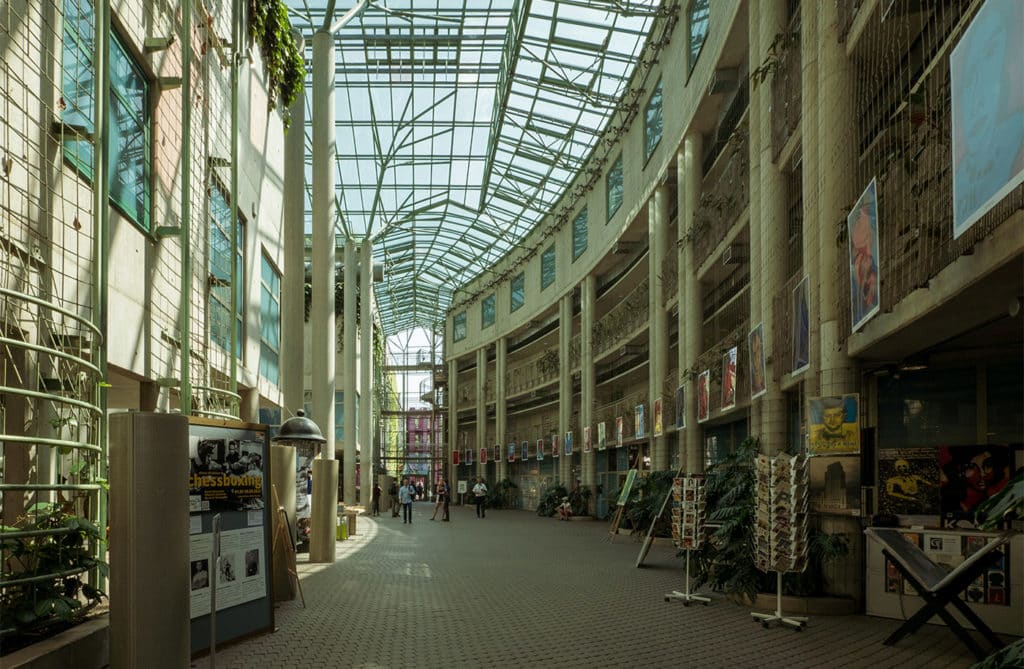
Address: Dobra 56/66
Going to Praga
Located on the right bank of Warsaw, the Praga district was relatively untouched by the war and retains its 19th century buildings. It is not the most touristic area of the city, far from it, but you can find there an ebullient life and underground cultural centers.
The Rózyckiego Bazaar, a small open-air market from the end of the 19th century, and the Neon Museum, hidden in the middle of an industrial wasteland, are worth seeing.
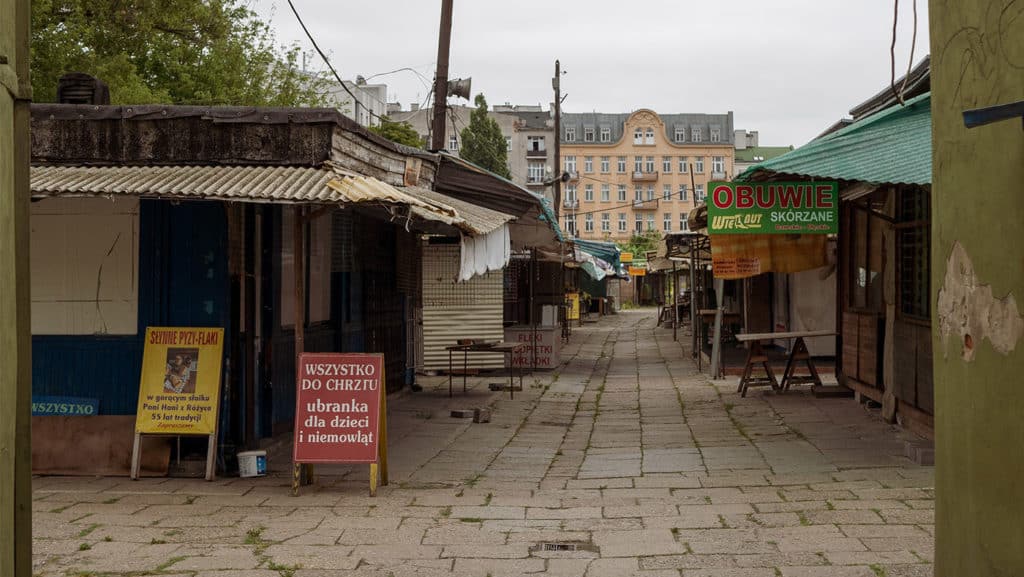
Address of the Neon Museum: Soho Factory Mińska 25 Praga District
Website: http://www.neonmuzeum.org/
Address of the Rózyckiego Bazaar: Targowa 54
Book a guided tour of the city
As you can see, Warsaw has a complex and exciting history. To fully appreciate the city, it is therefore best to take a guided tour.
You can call on Kasia Kacprzak who was a perfect guide during my stay and who will be able to accompany you with impeccable French! You can contact her by mail or by phone:
Kkacprzak.pm@gmail.com +48505782083
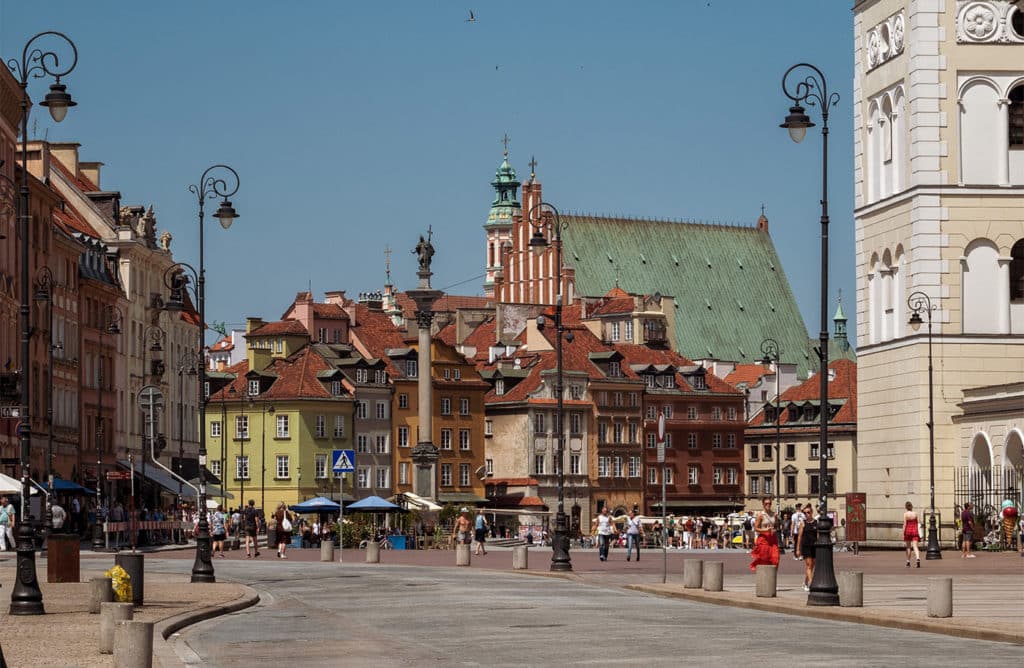
Good addresses in Warsaw
Where to eat?
There is no shortage of good addresses in Warsaw, which has something to seduce gourmets and foodies! If you are looking for good restaurants, I have prepared a selection of 6 addresses where you can go with your eyes closed.
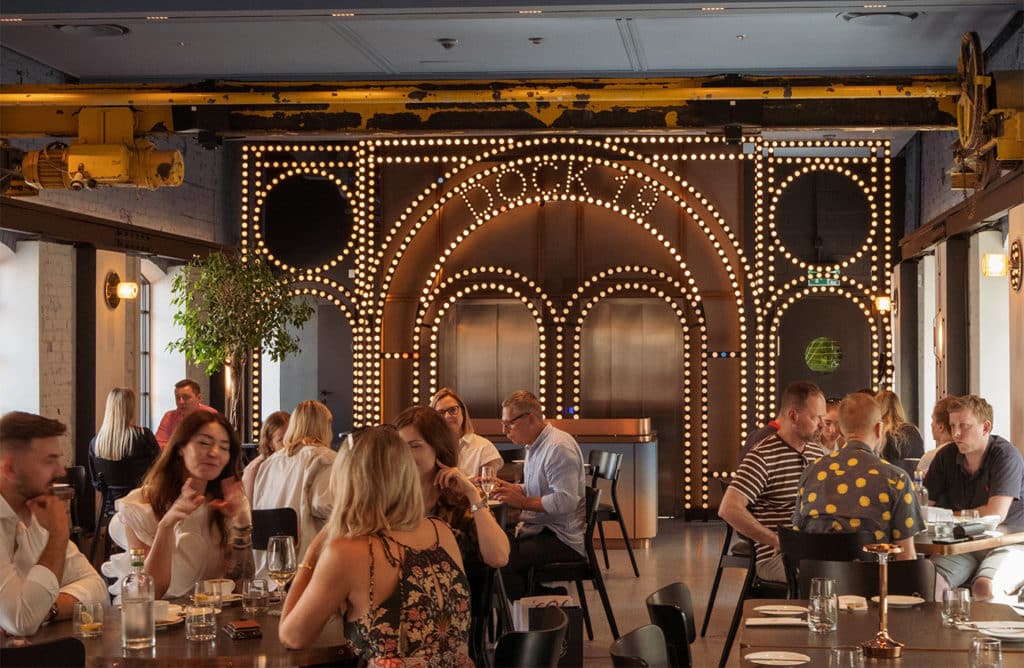
Where to stay?
The hotel offer is dense, you will find in Warsaw all ranges of accommodation, from youth hostels to palaces.
Be careful not to make the mistake of staying in the Old Town. Although it is the most touristic area, it is not very central. For a better visit of the city, it is better to find a hotel located in the center of Warsaw, near the “Centrum” station.
I recommend the H15 Boutique Hotel, ideally located, which is housed in a historical building that used to be the Soviet embassy before the war. I especially like the hearty breakfast where you can order tasty ready-made meals!

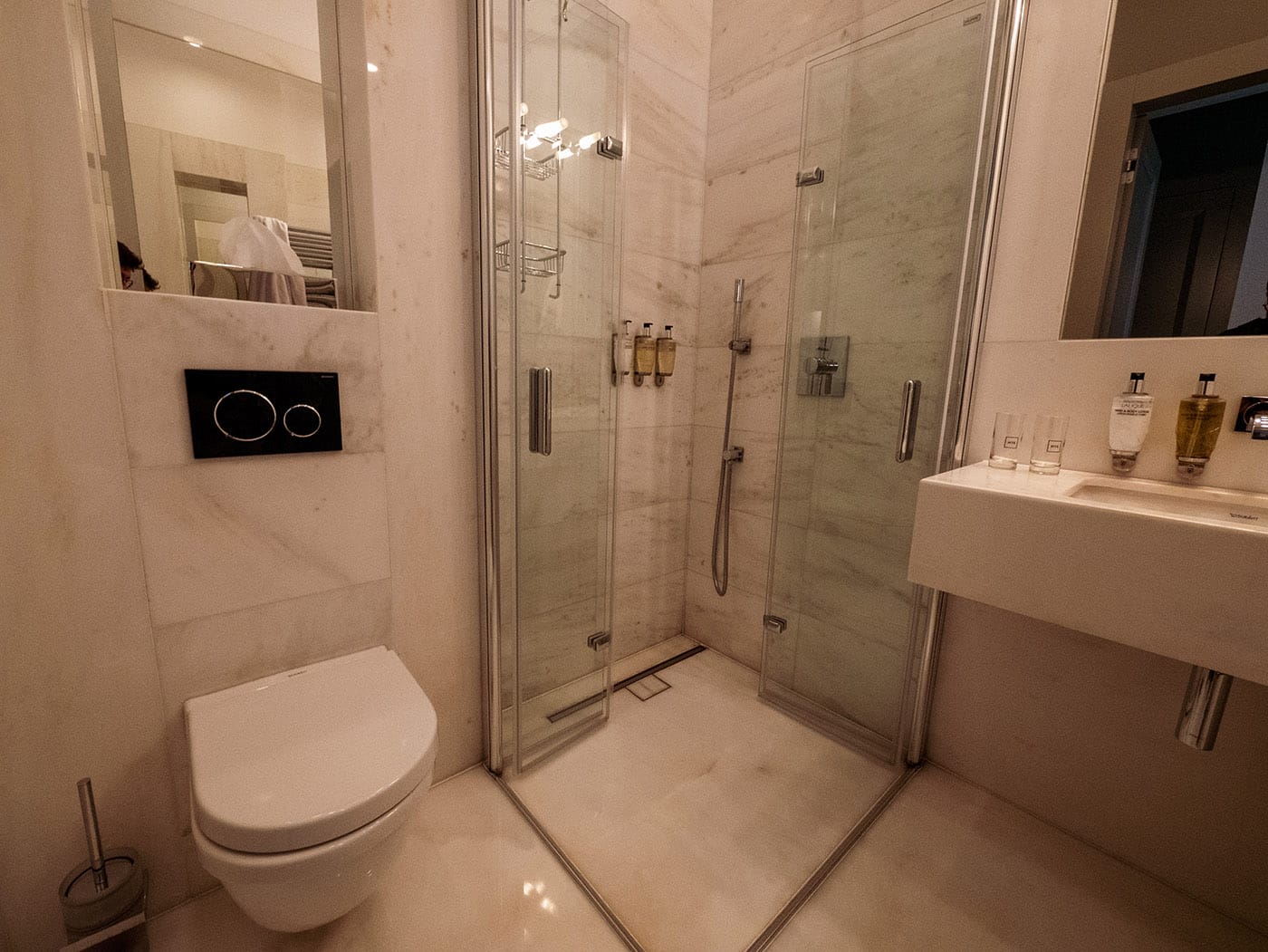
Map to find your way in Warsaw
The most beautiful photo spots in Warsaw
If you like photography then you will have a lot of fun in Warsaw. Its different architectural styles make it a great playground for photographers!
What are the most Instagrammable places in Warsaw? Find my selection here :
Did you like this article? Pin it on Pinterest!
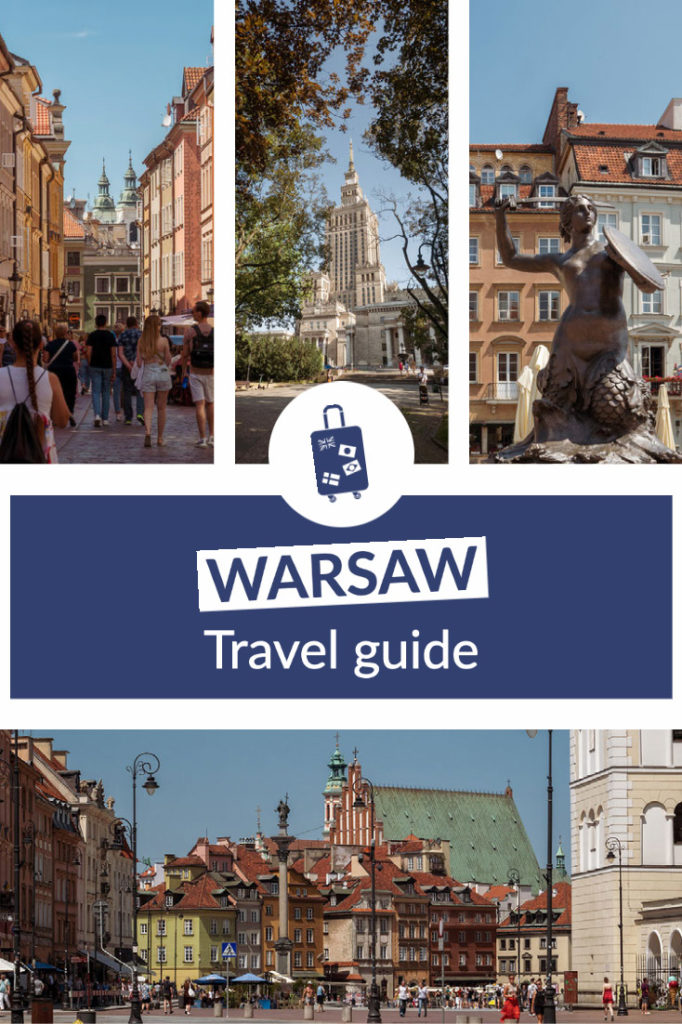
Article made in partnership with the Tourist Office of Poland in France
Many thanks to Anna and Elzbieta for their welcome

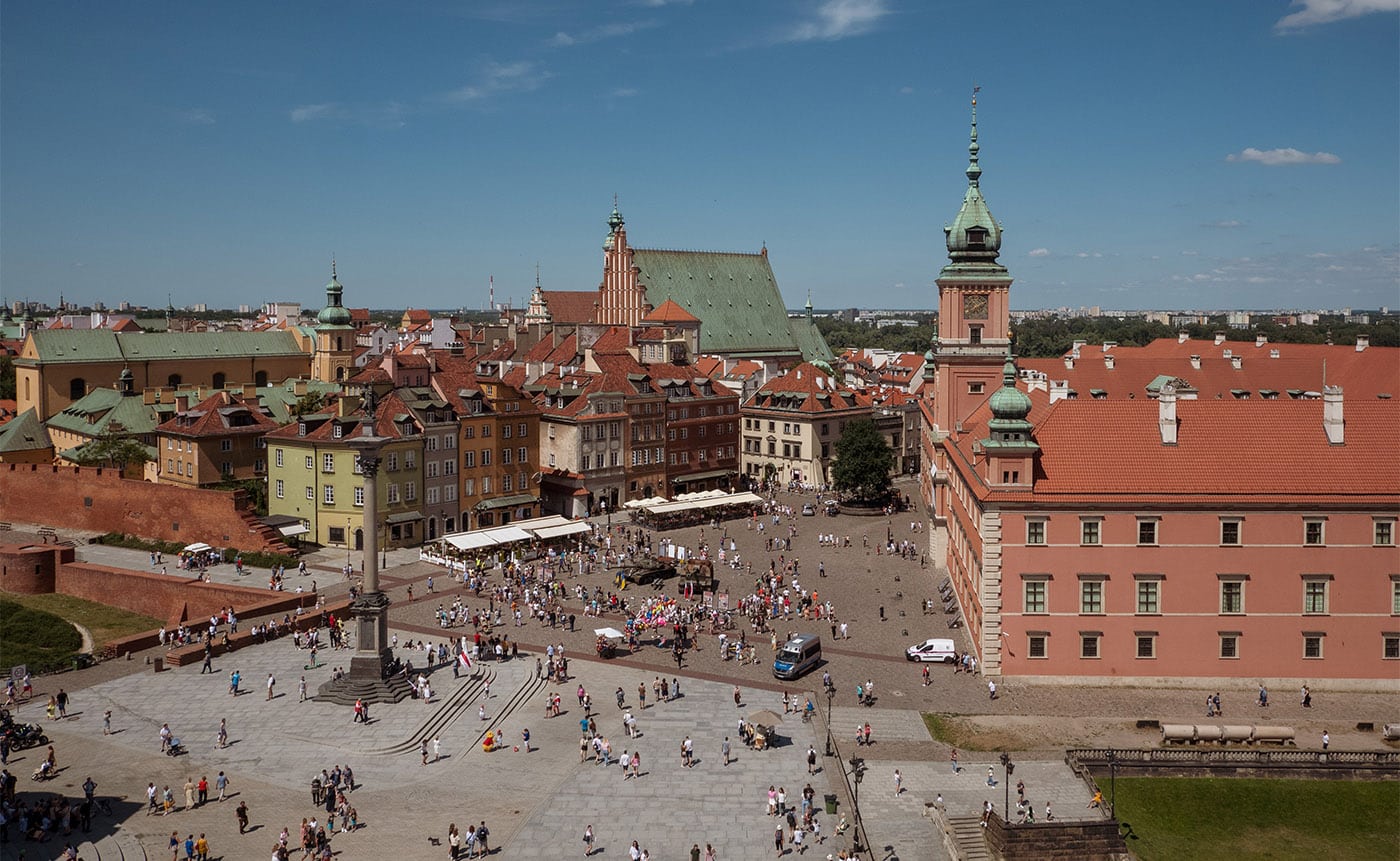



No Comments
Leave a comment Cancel